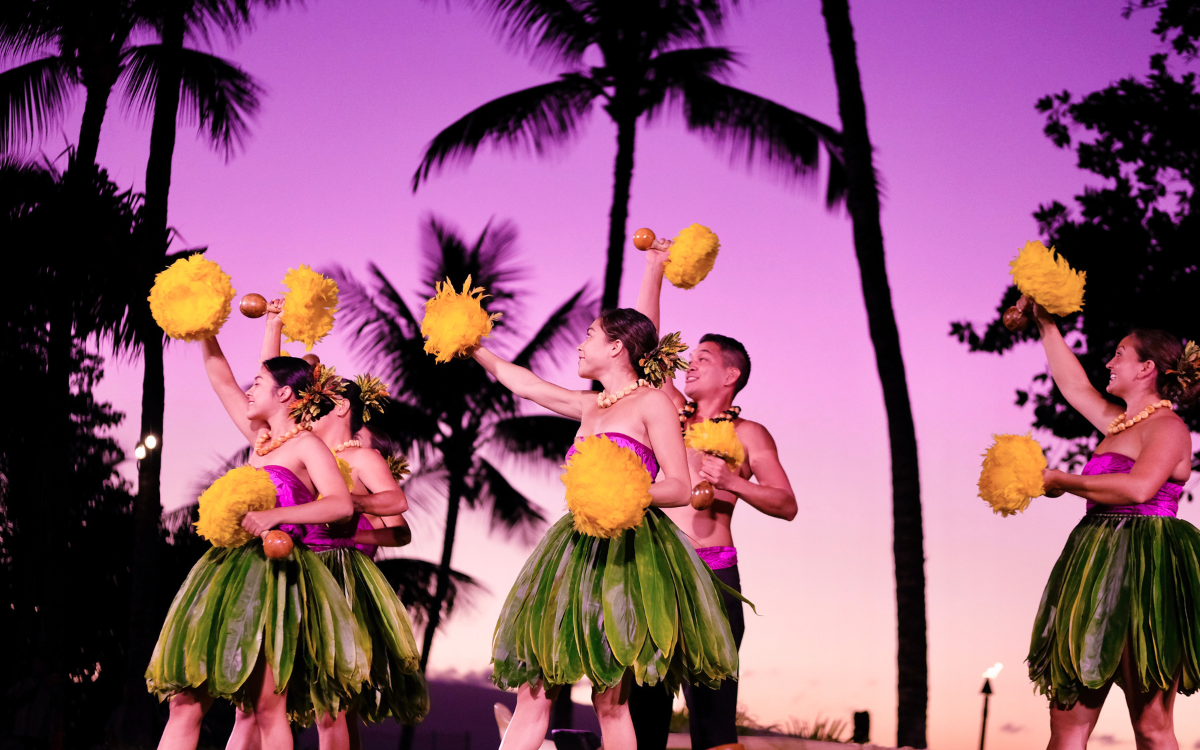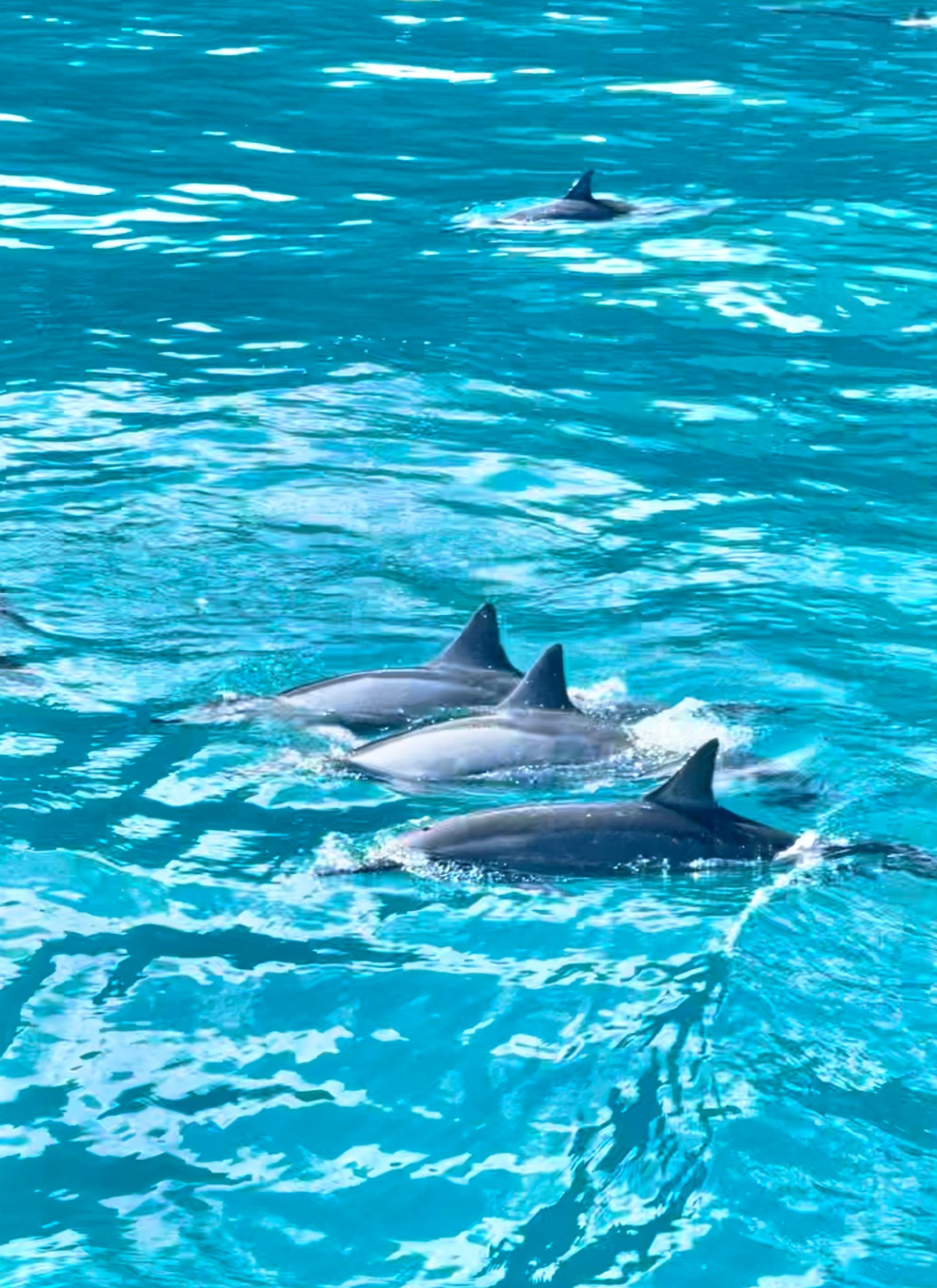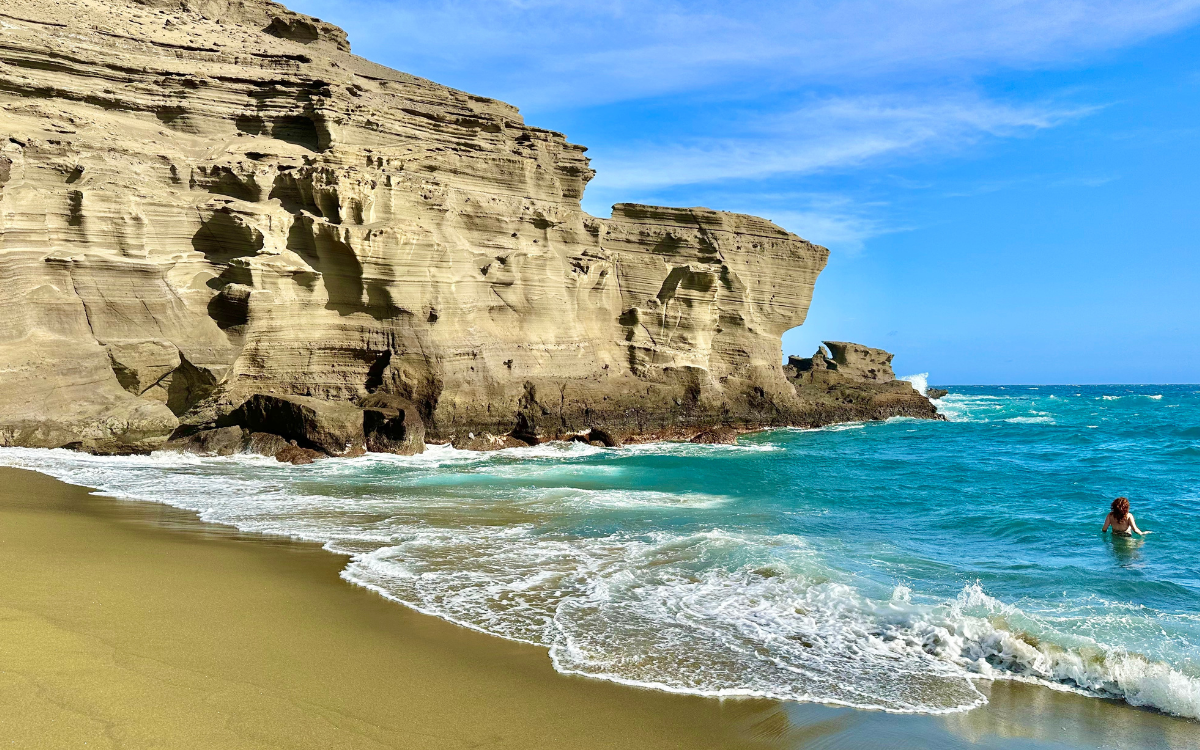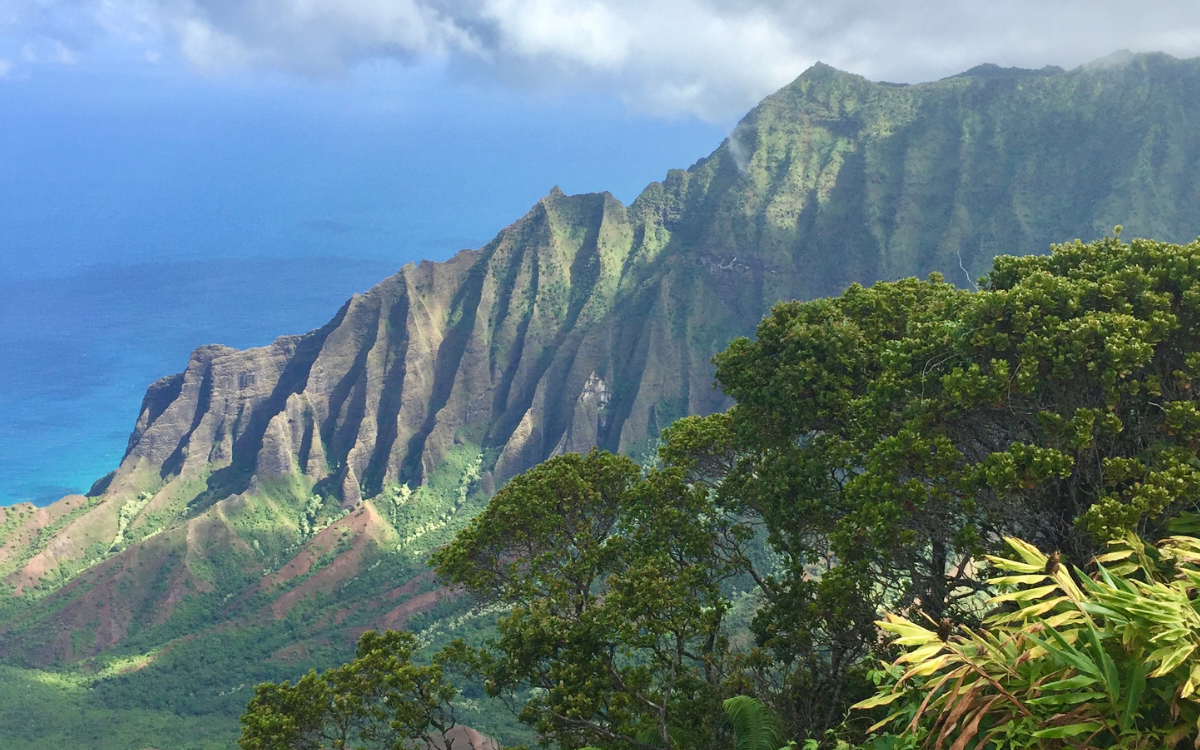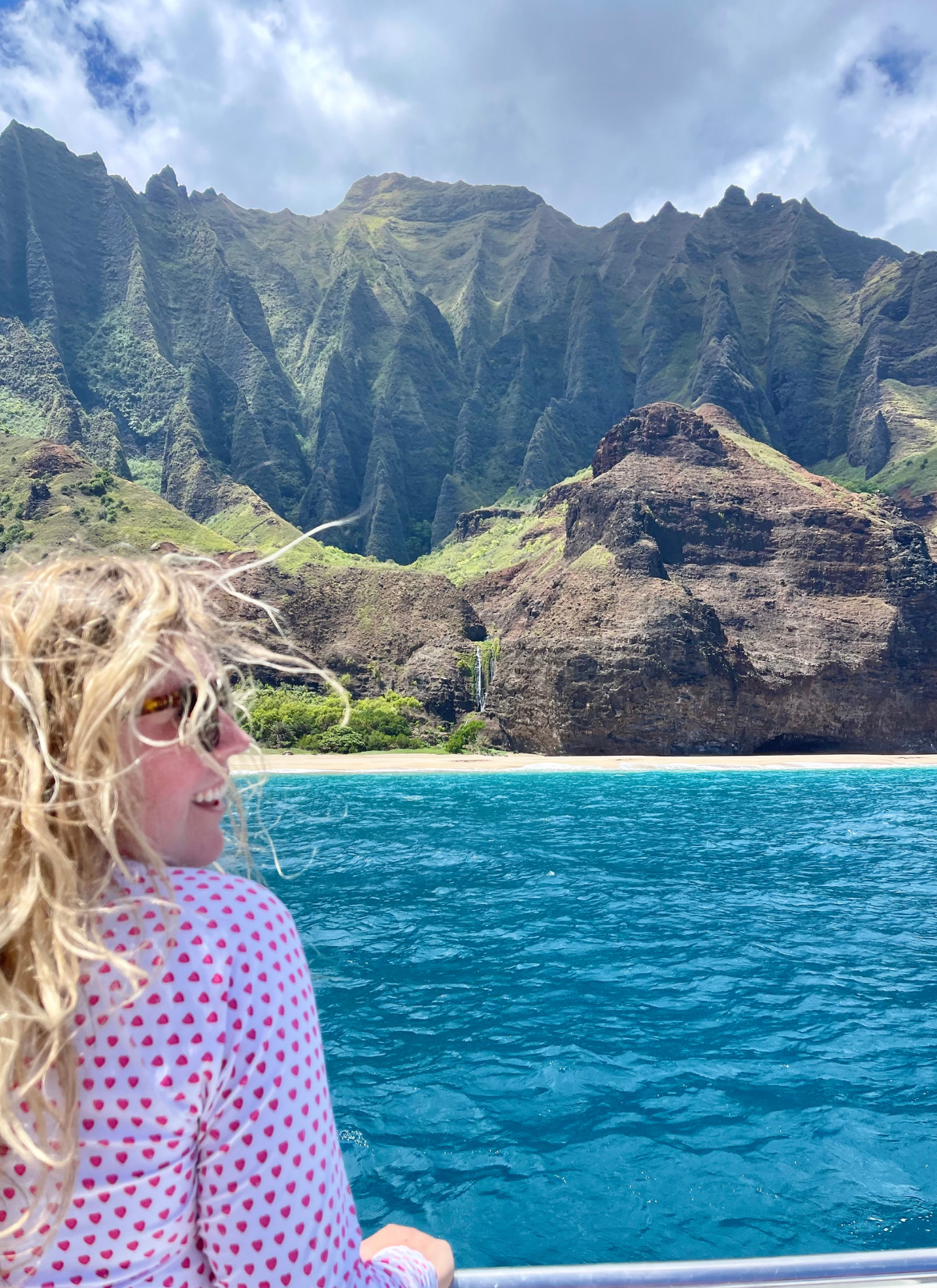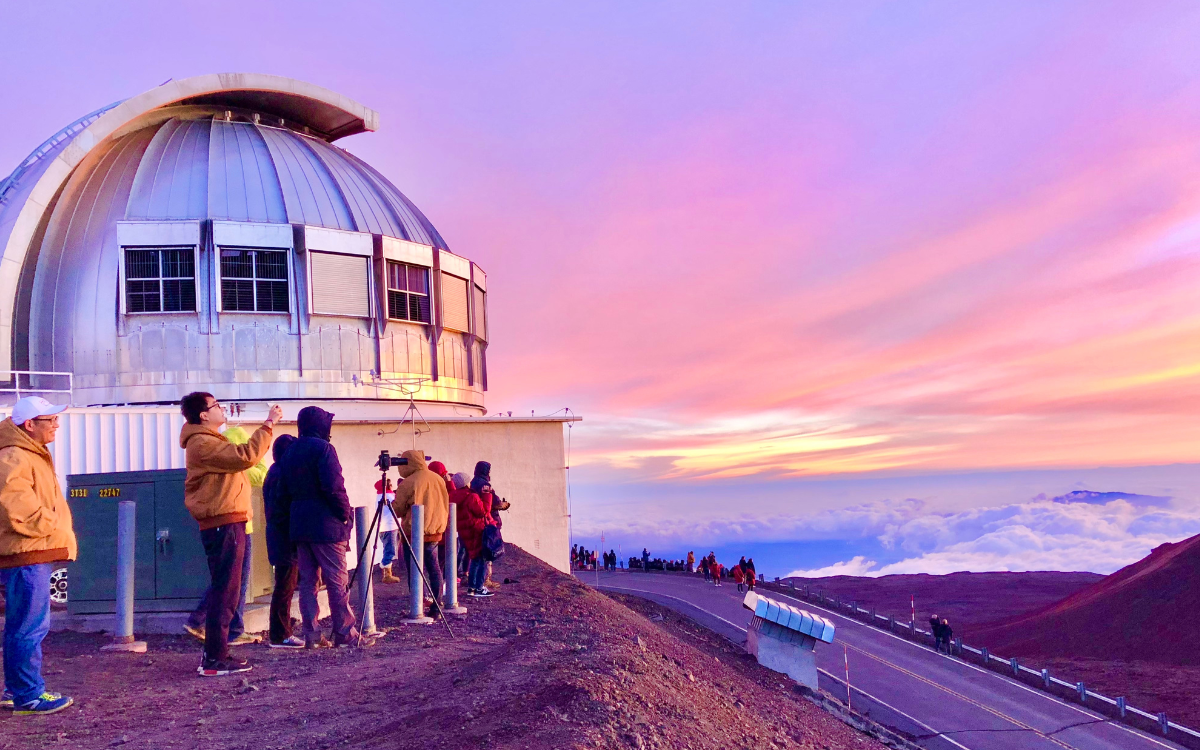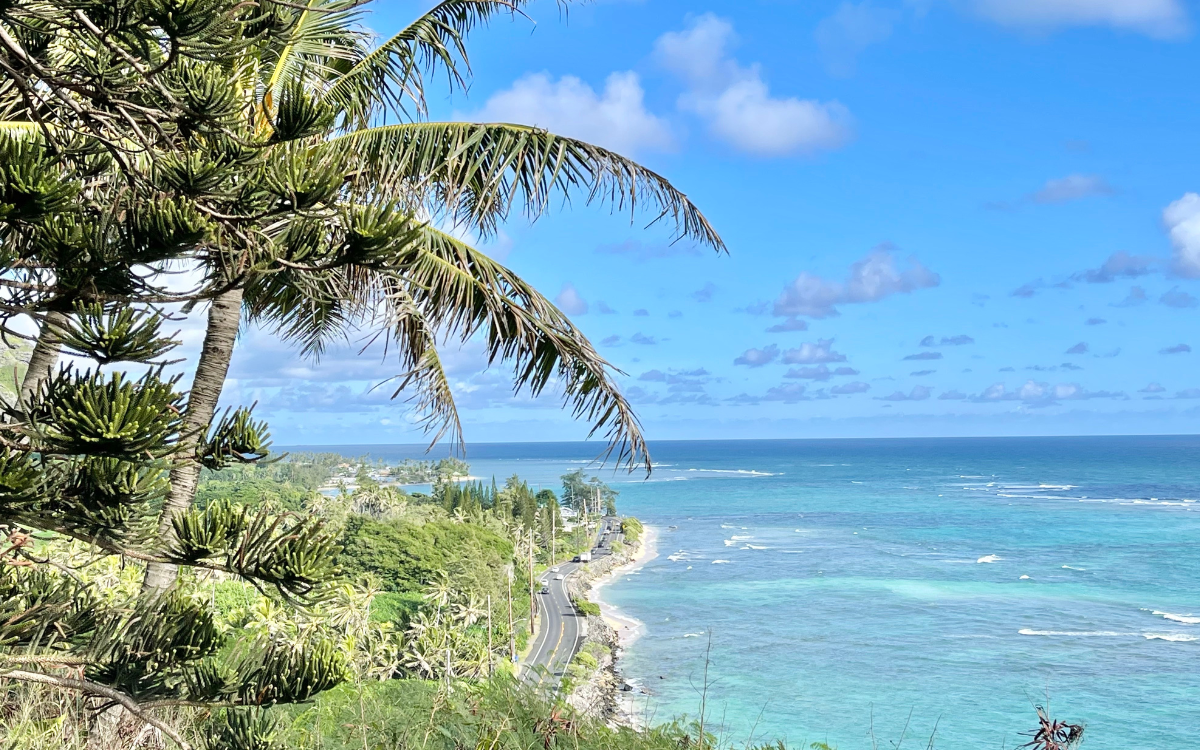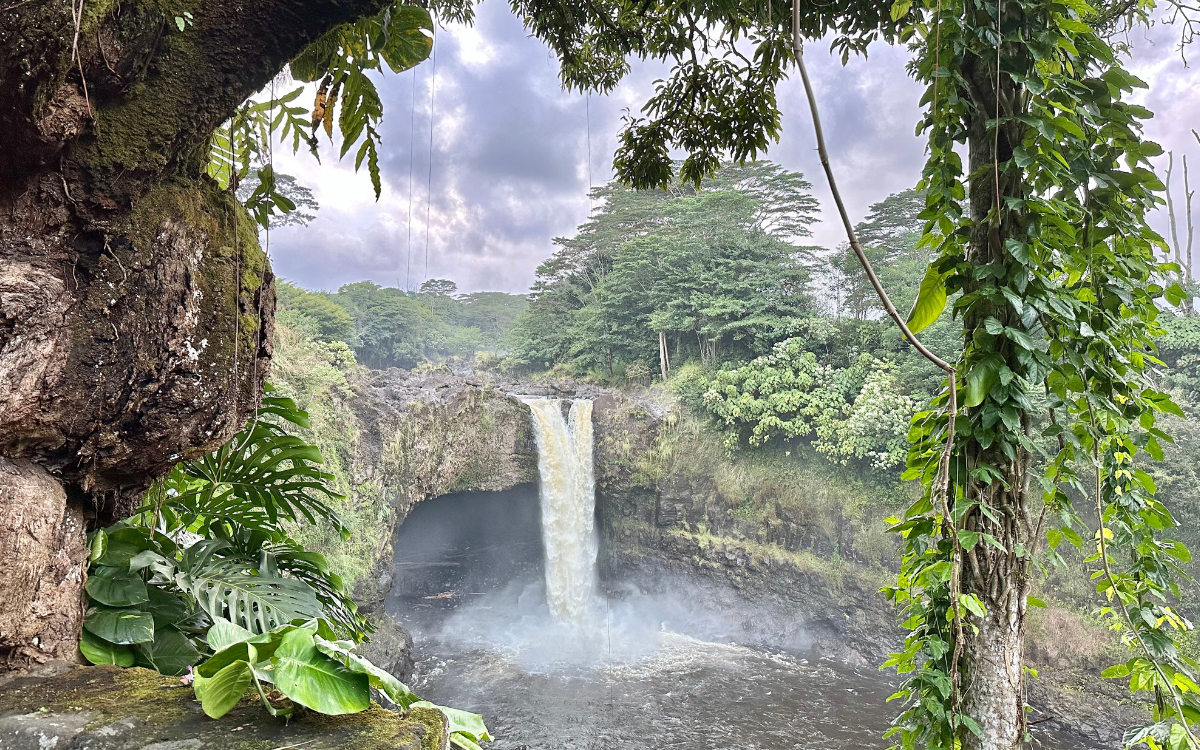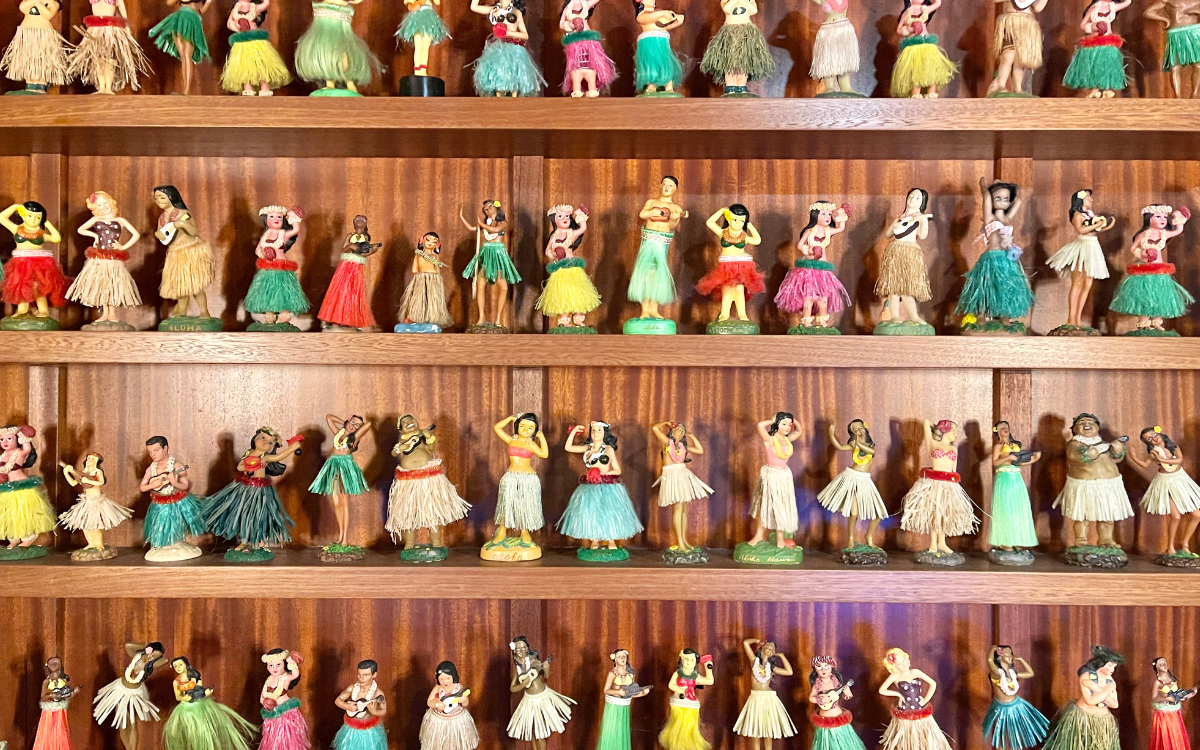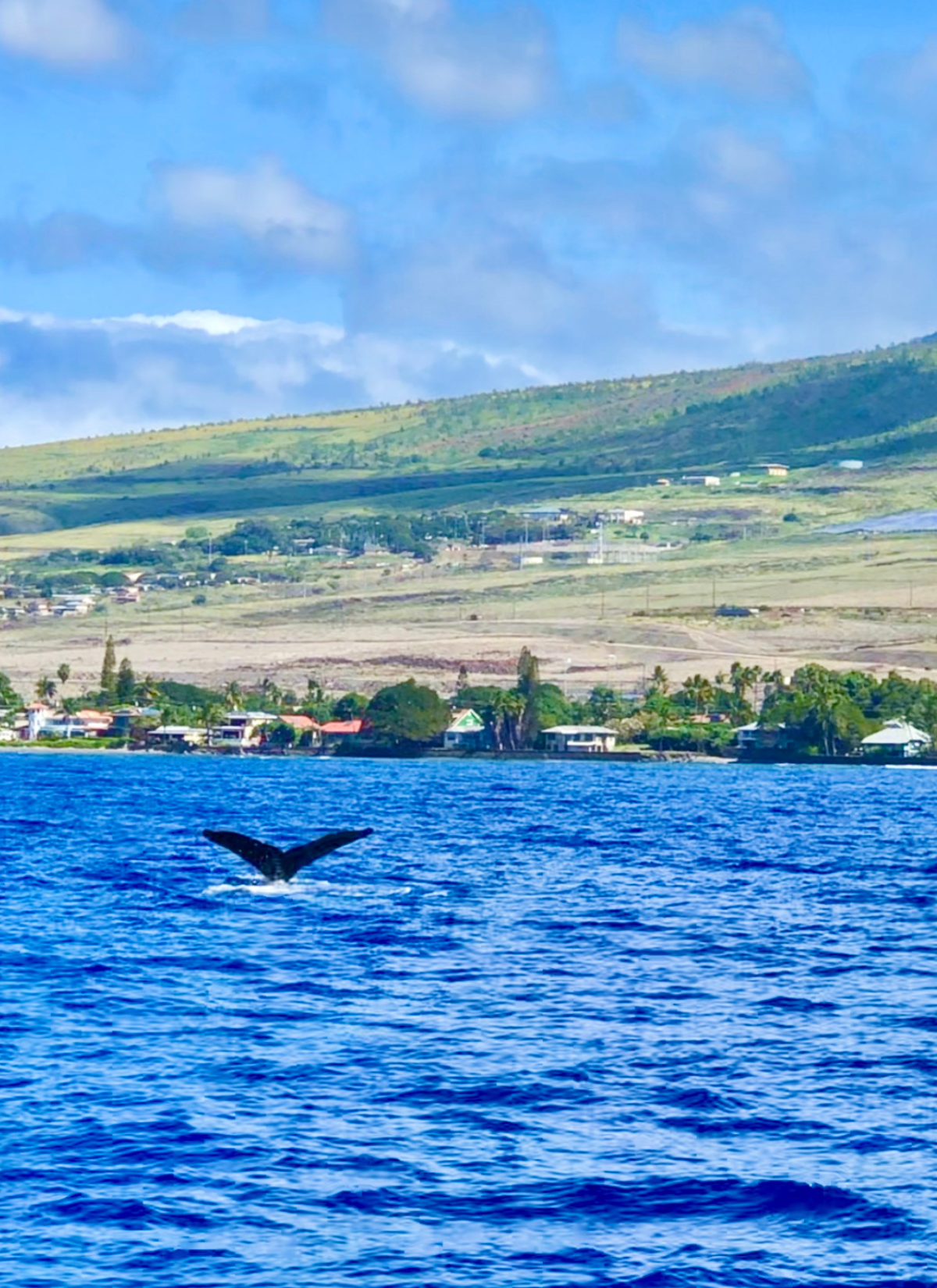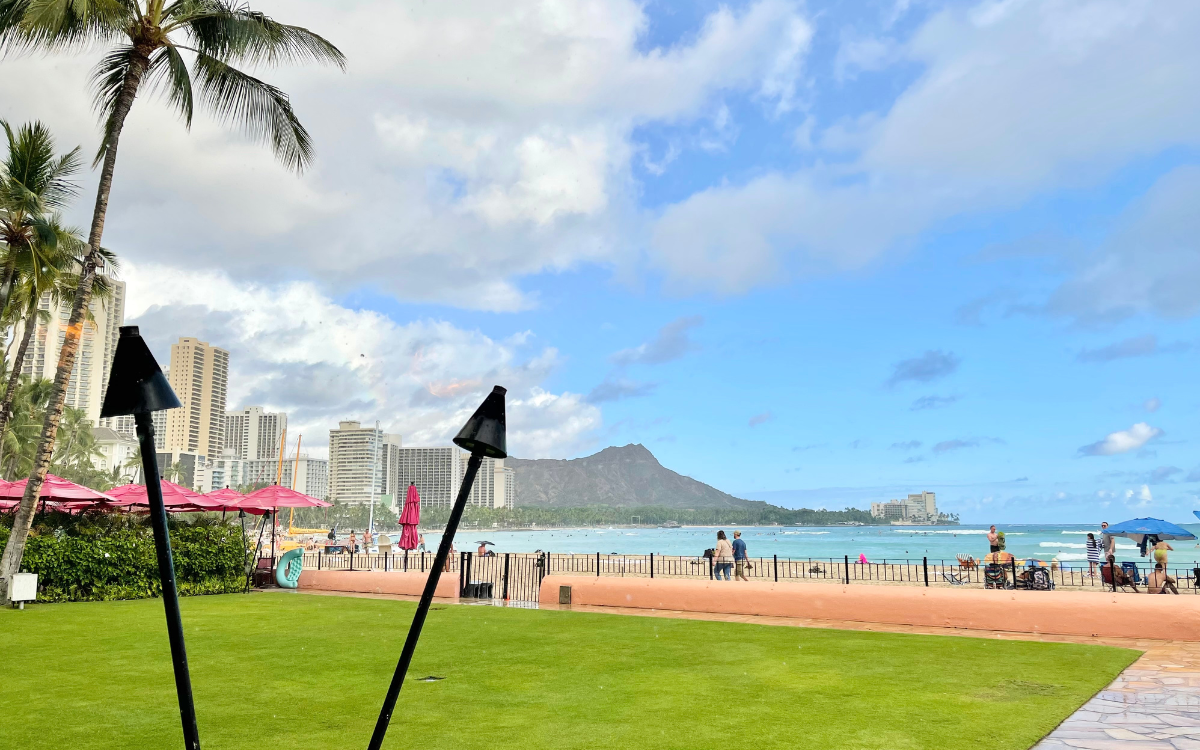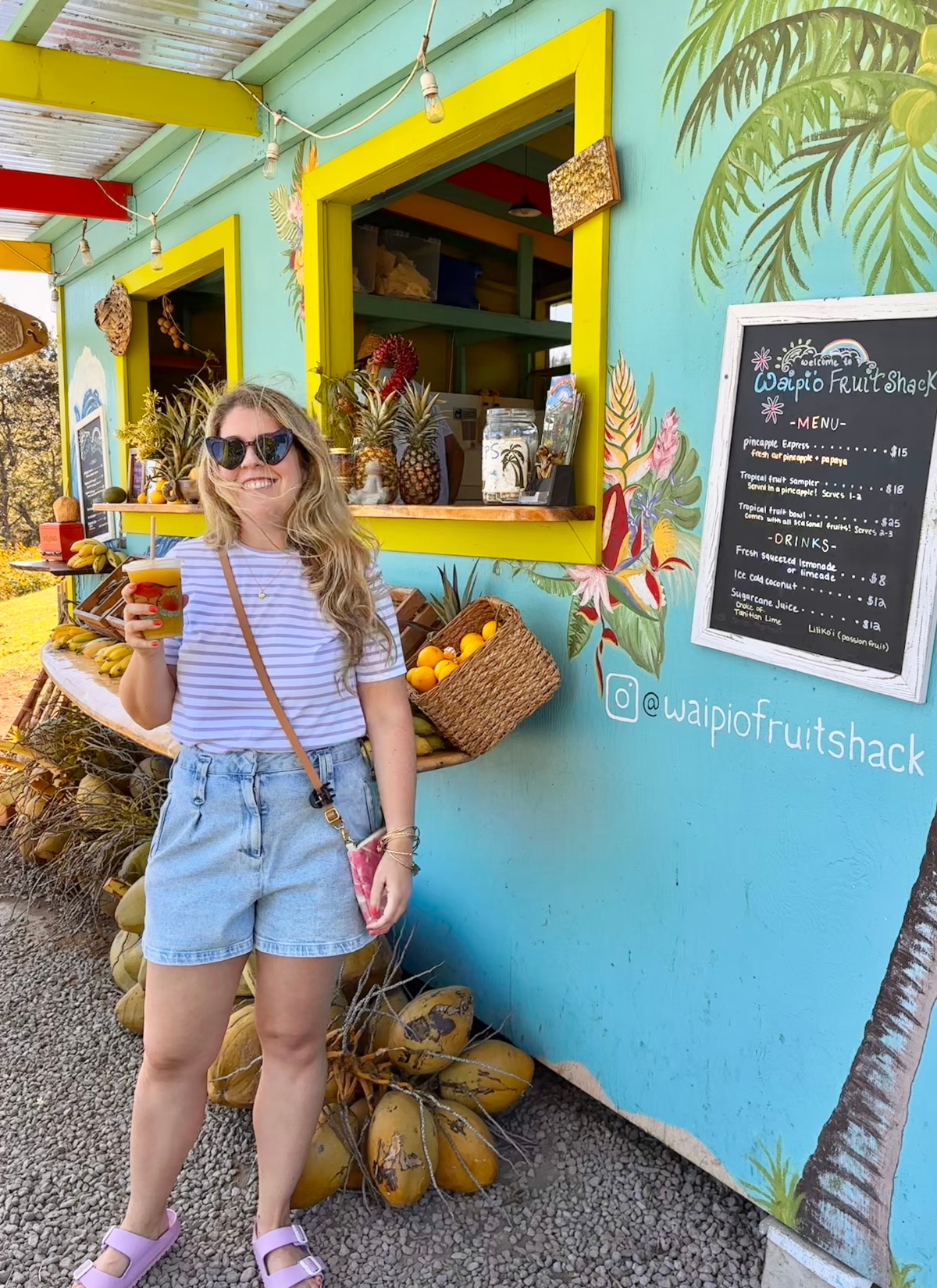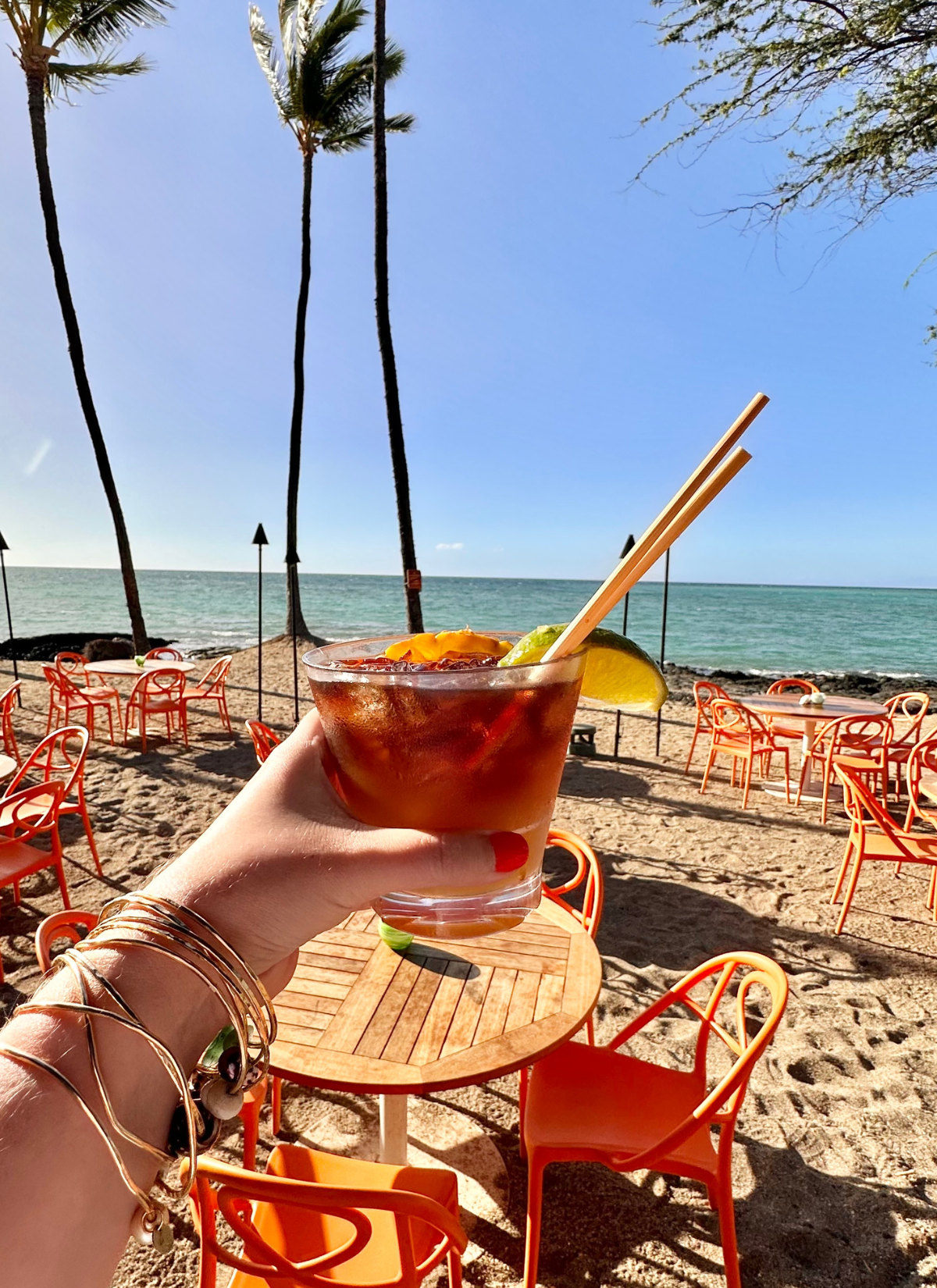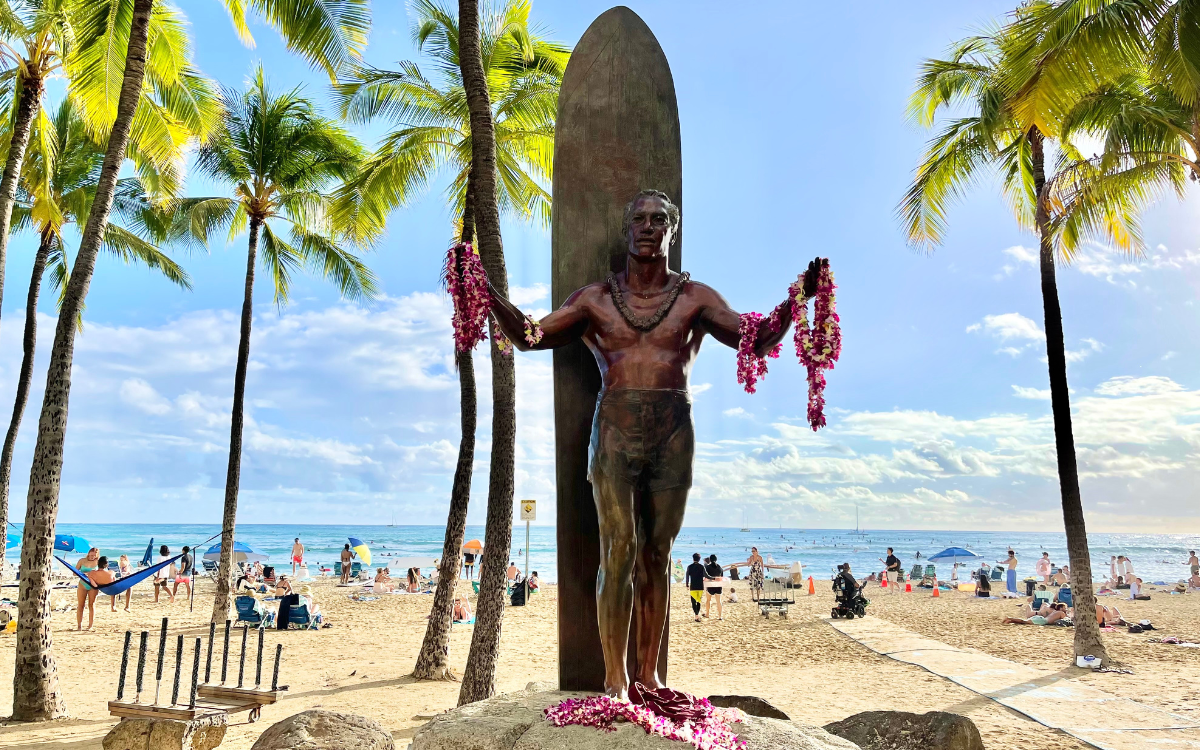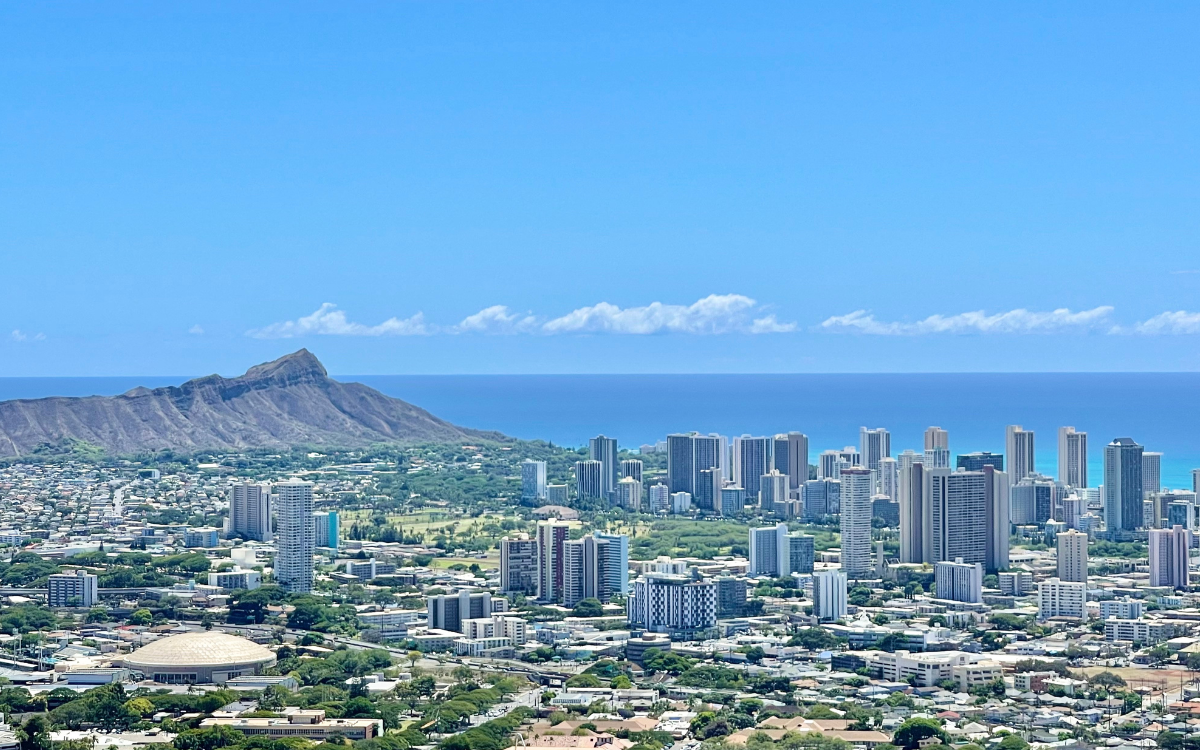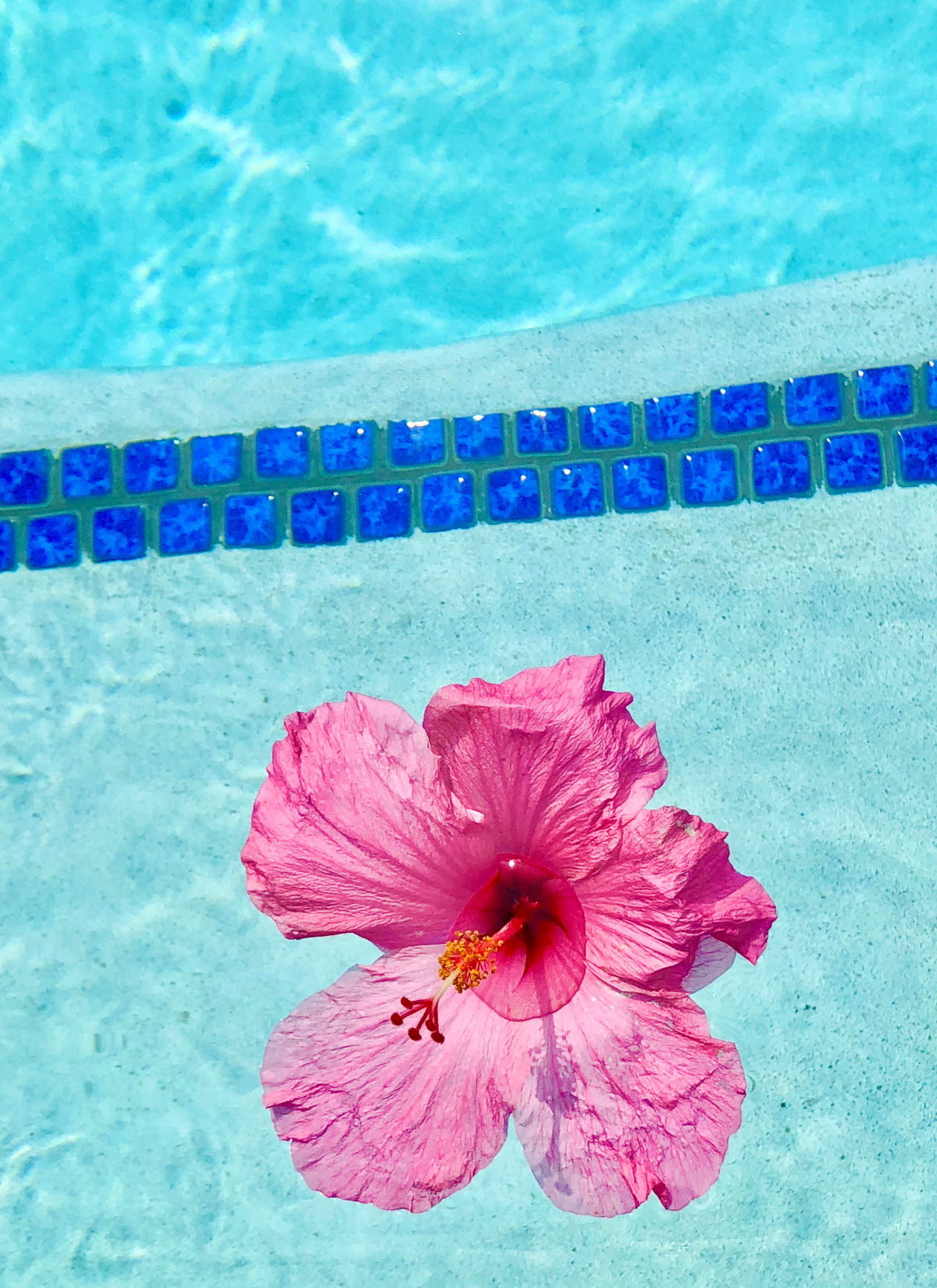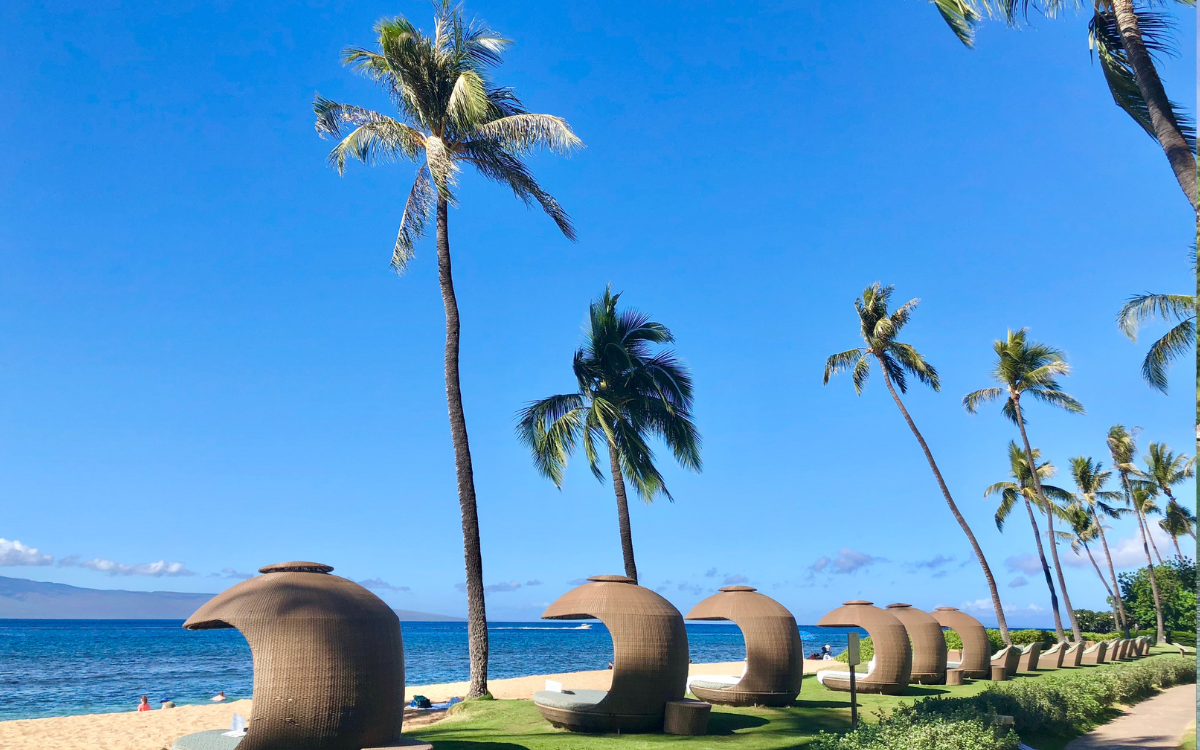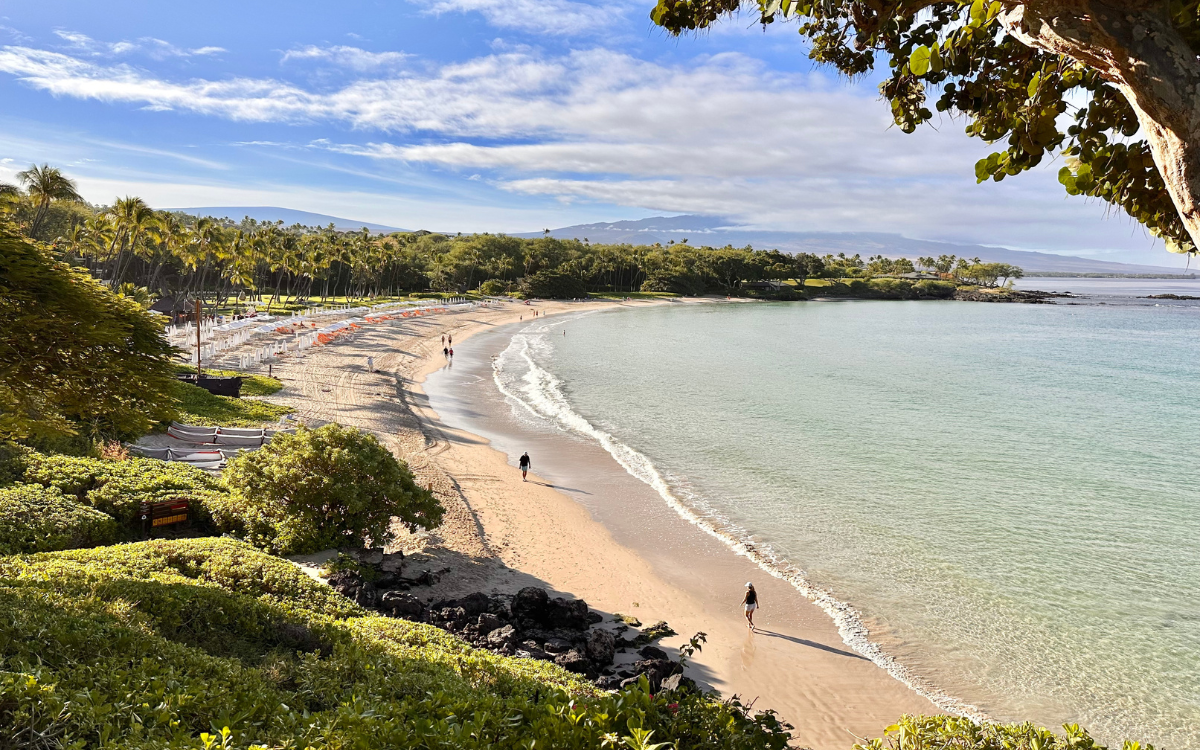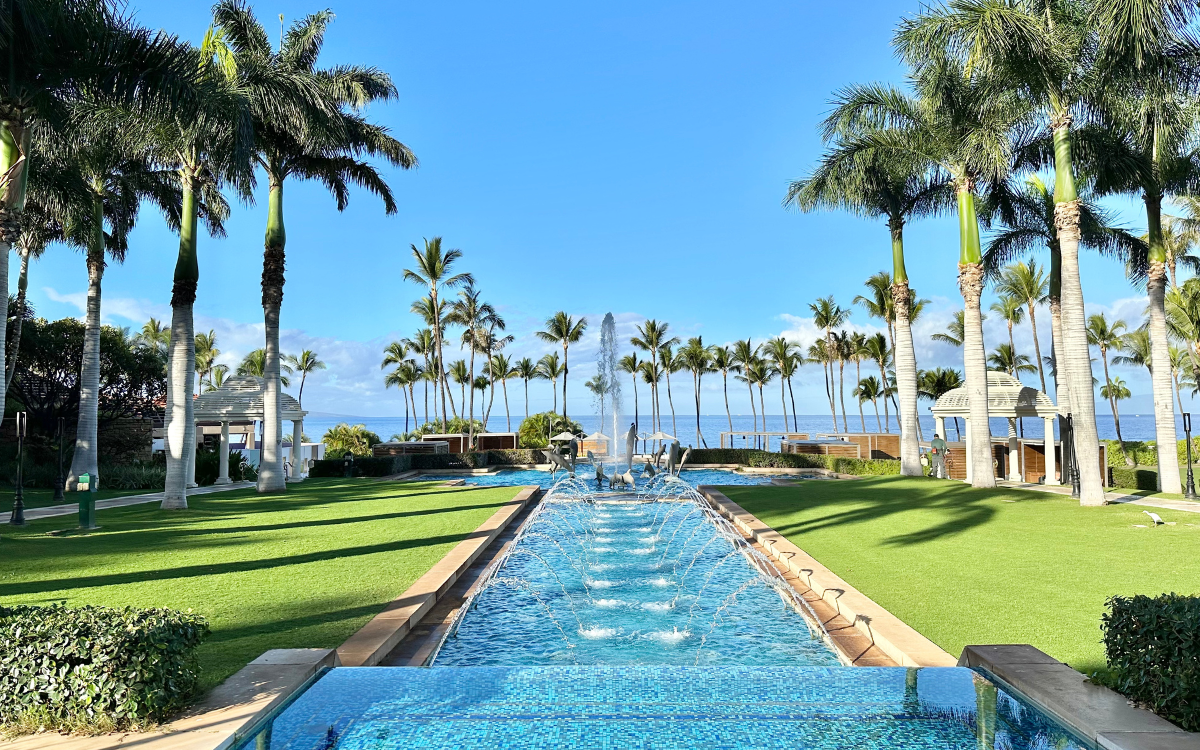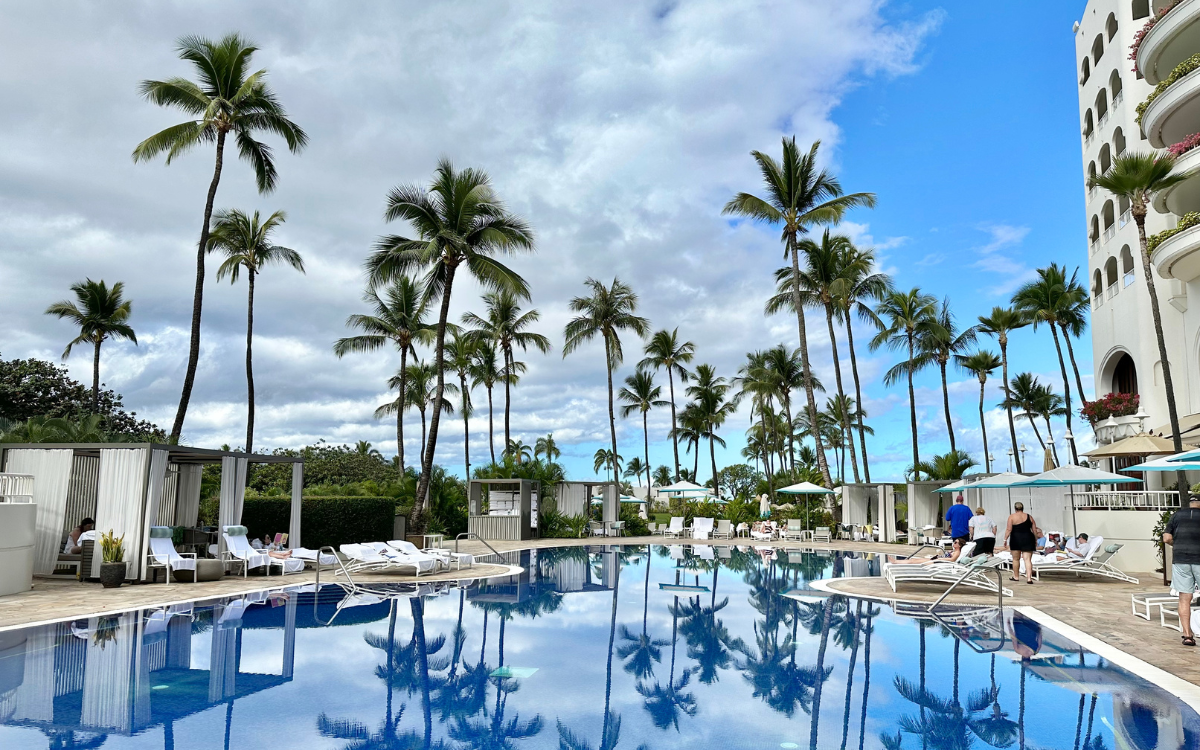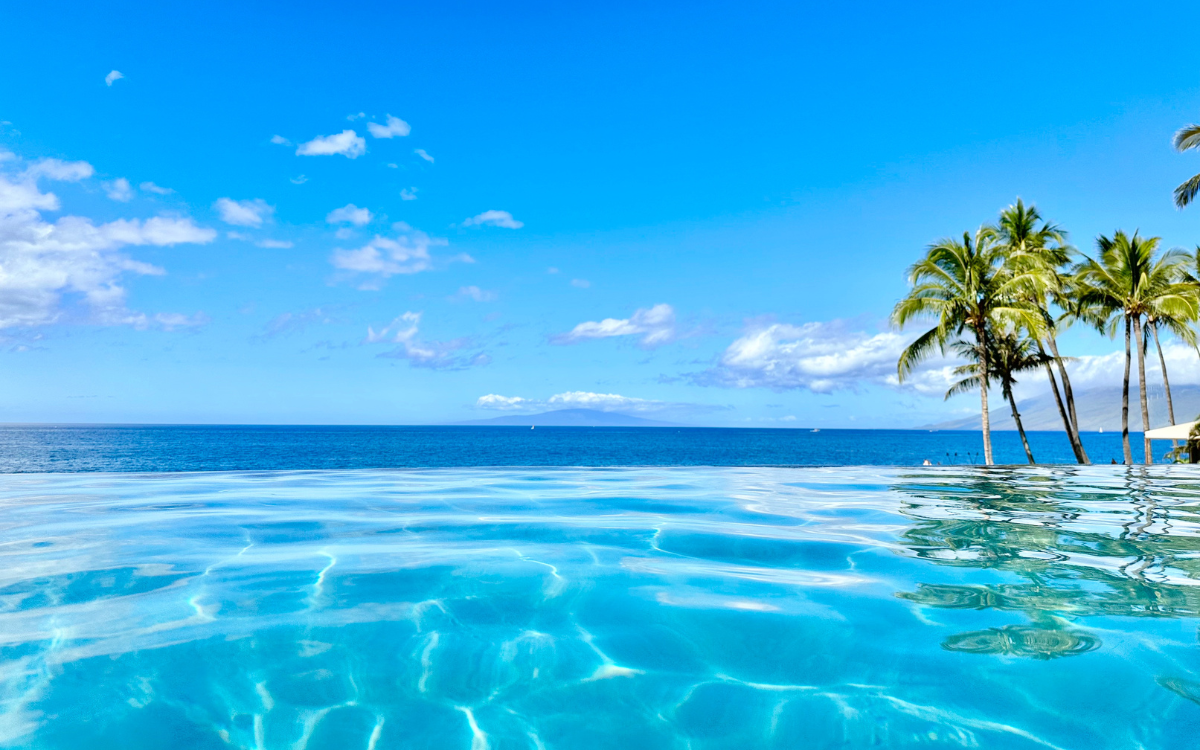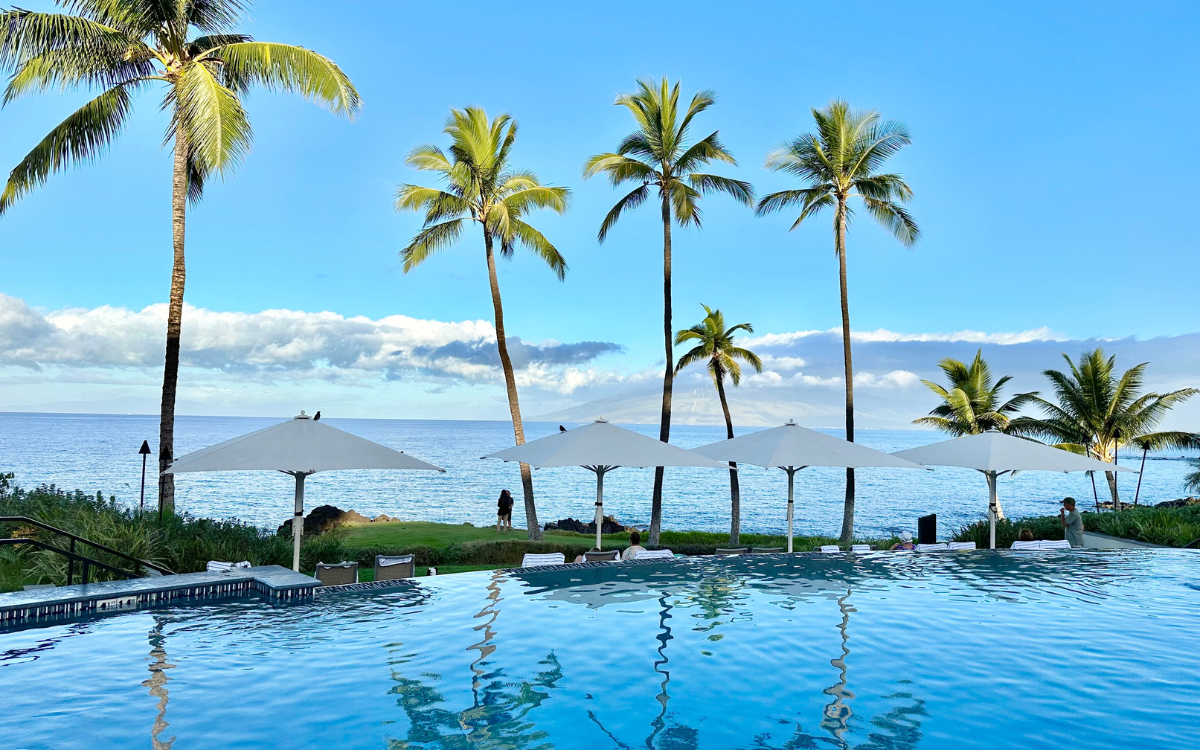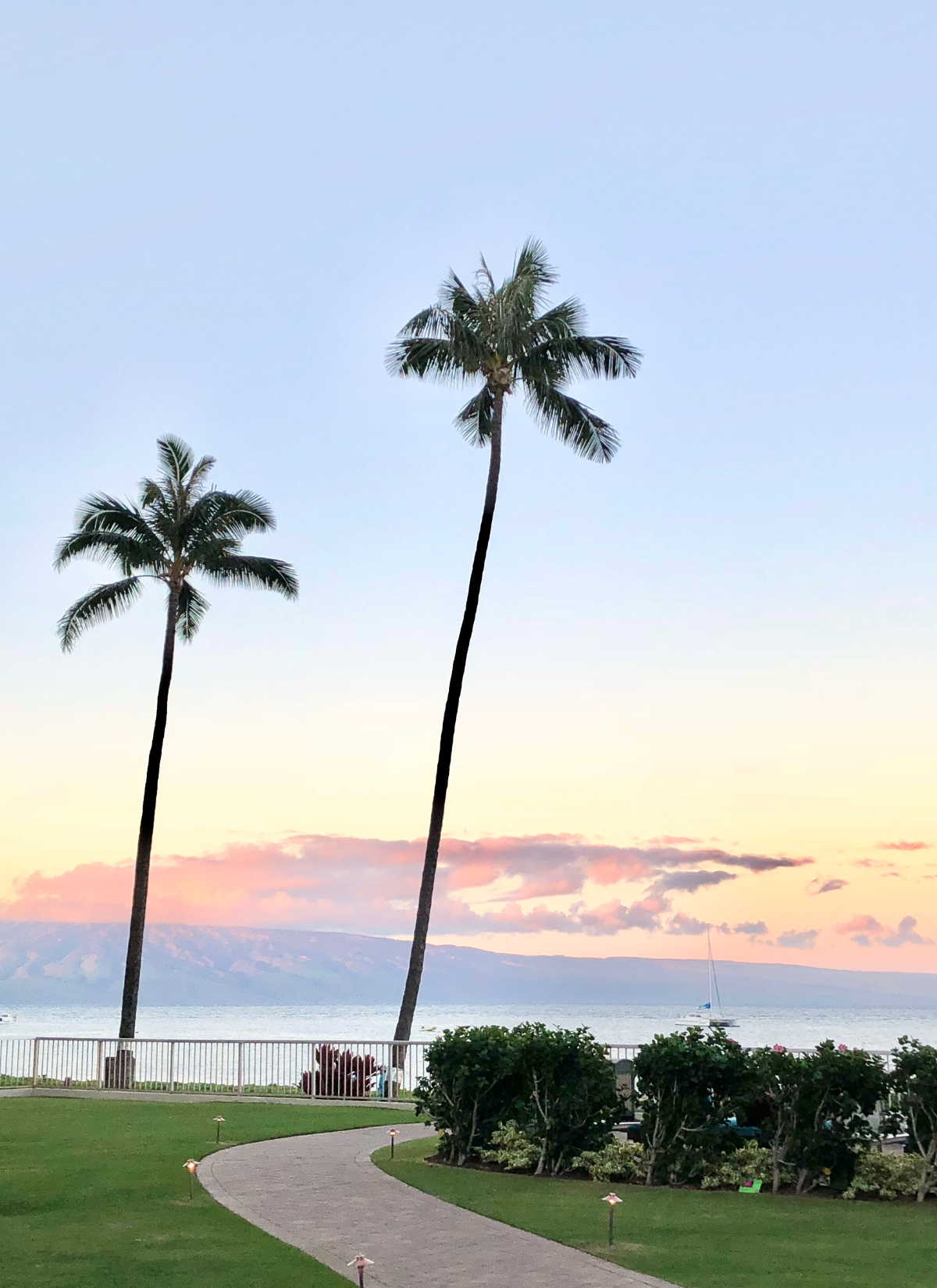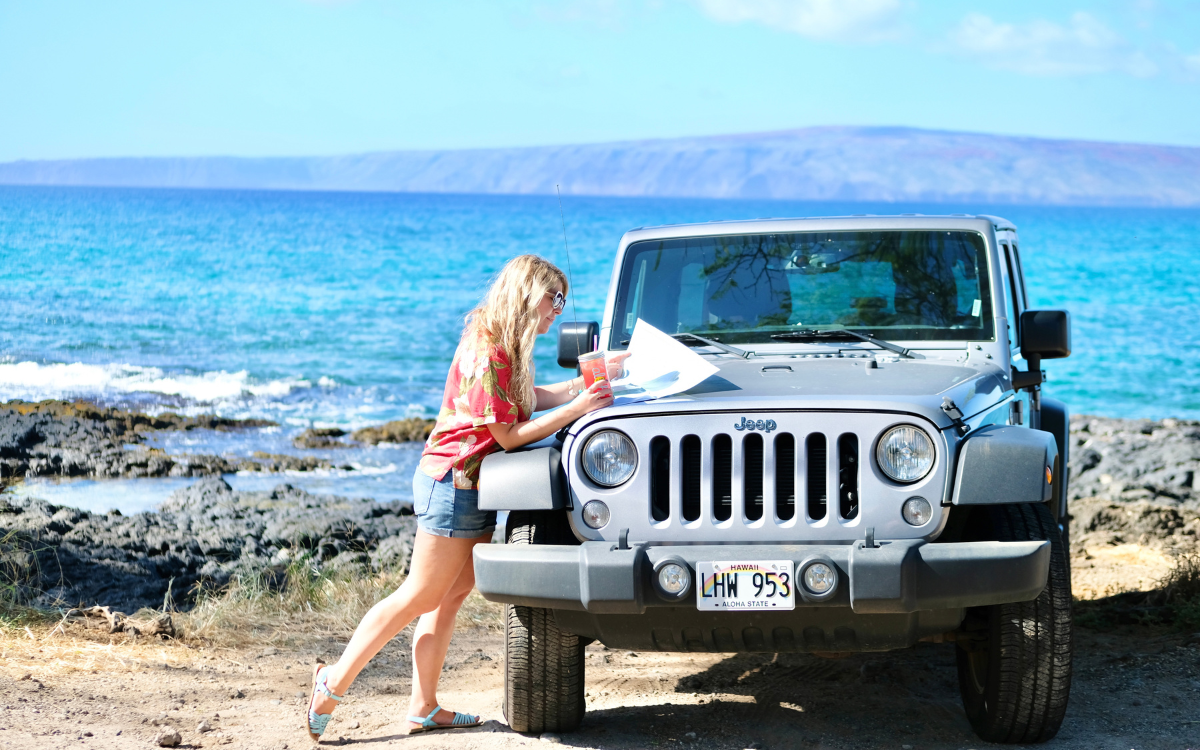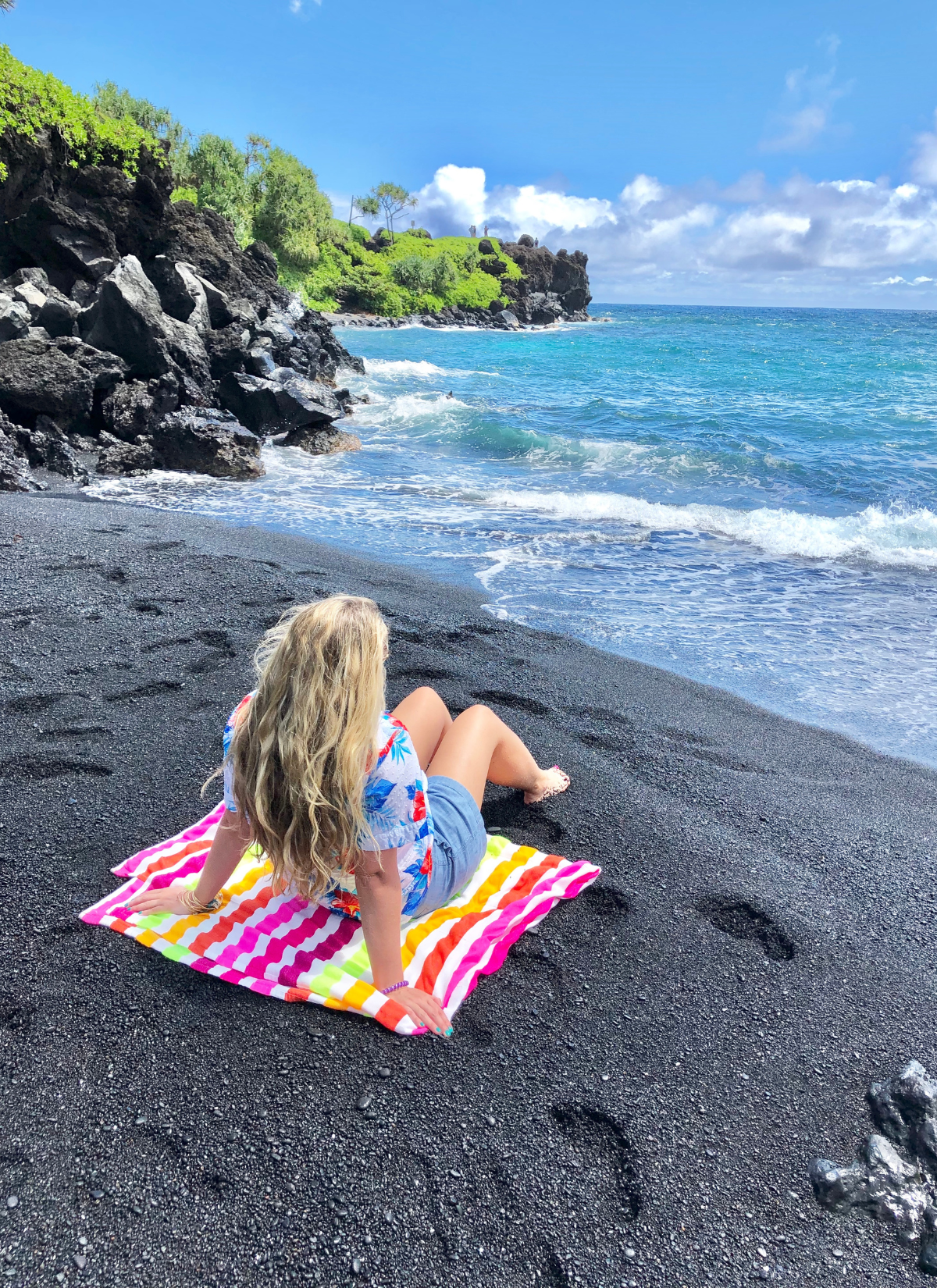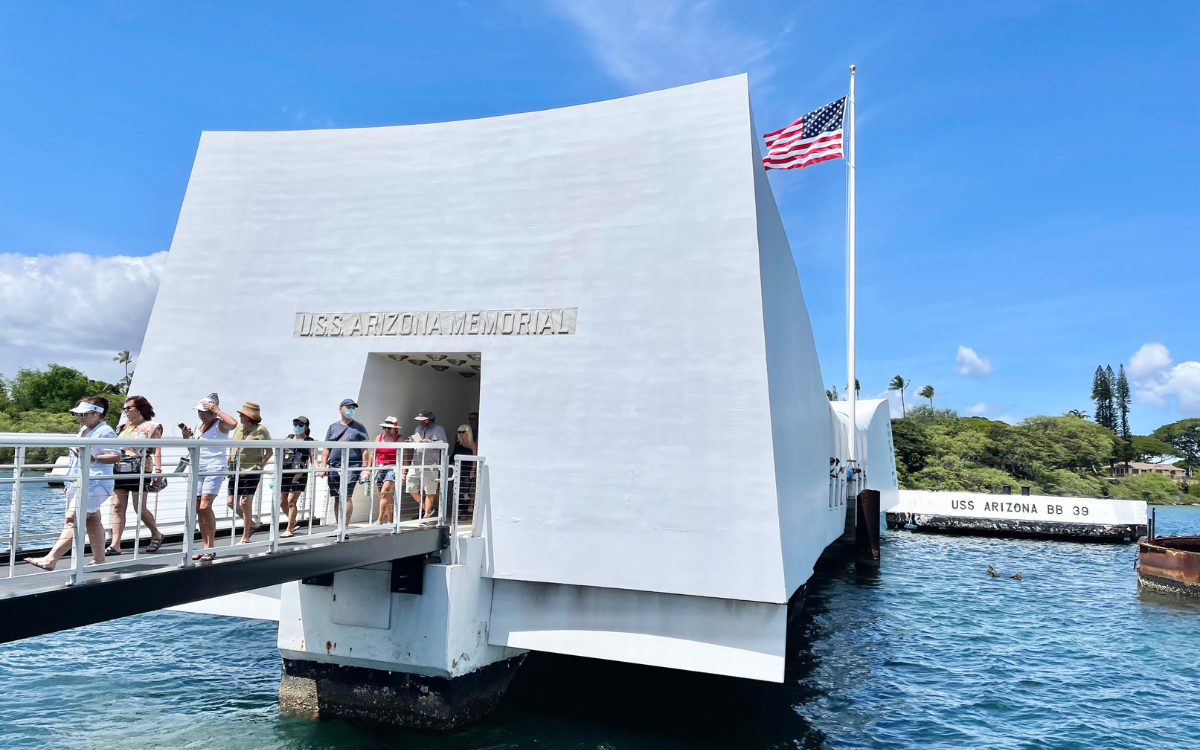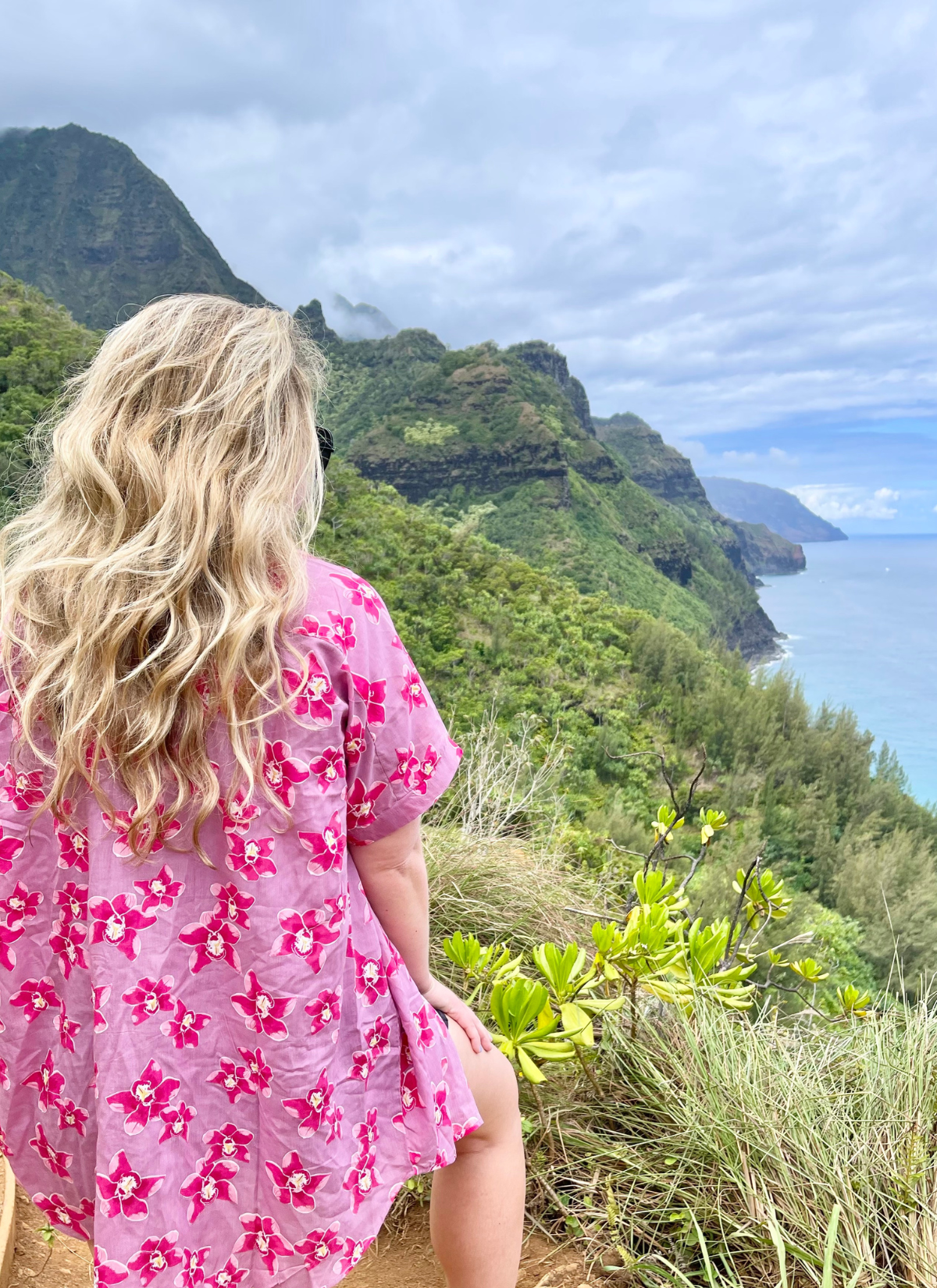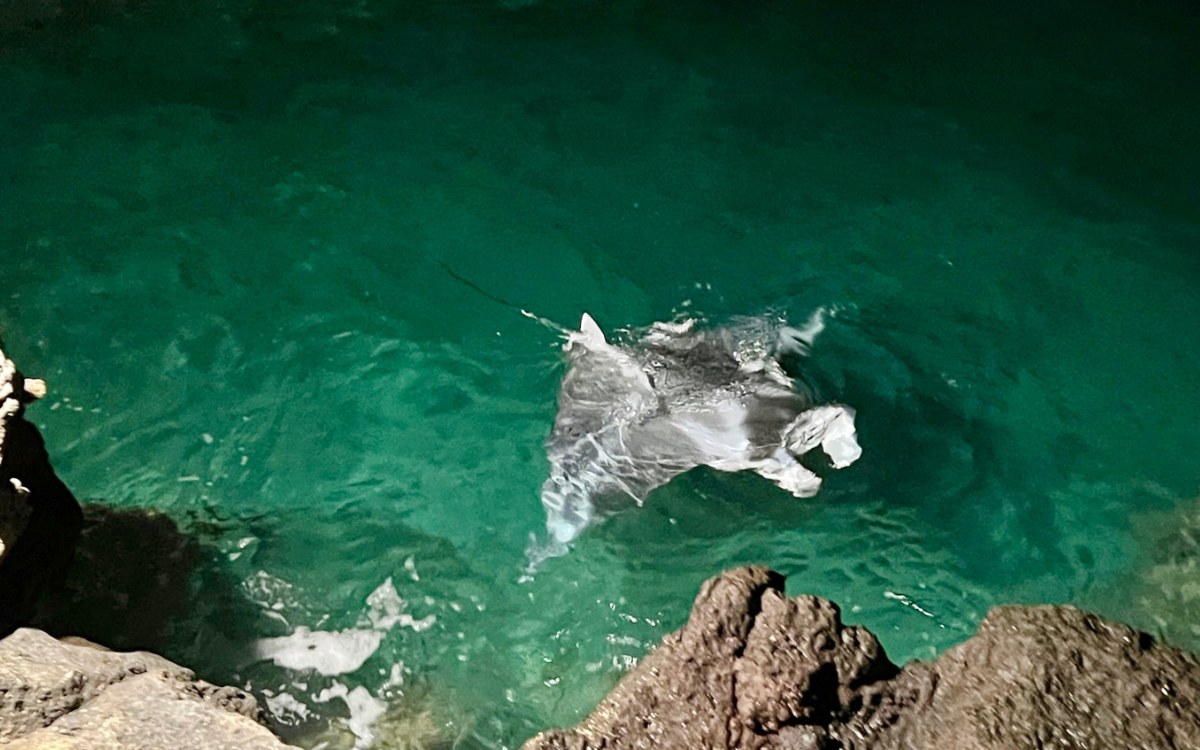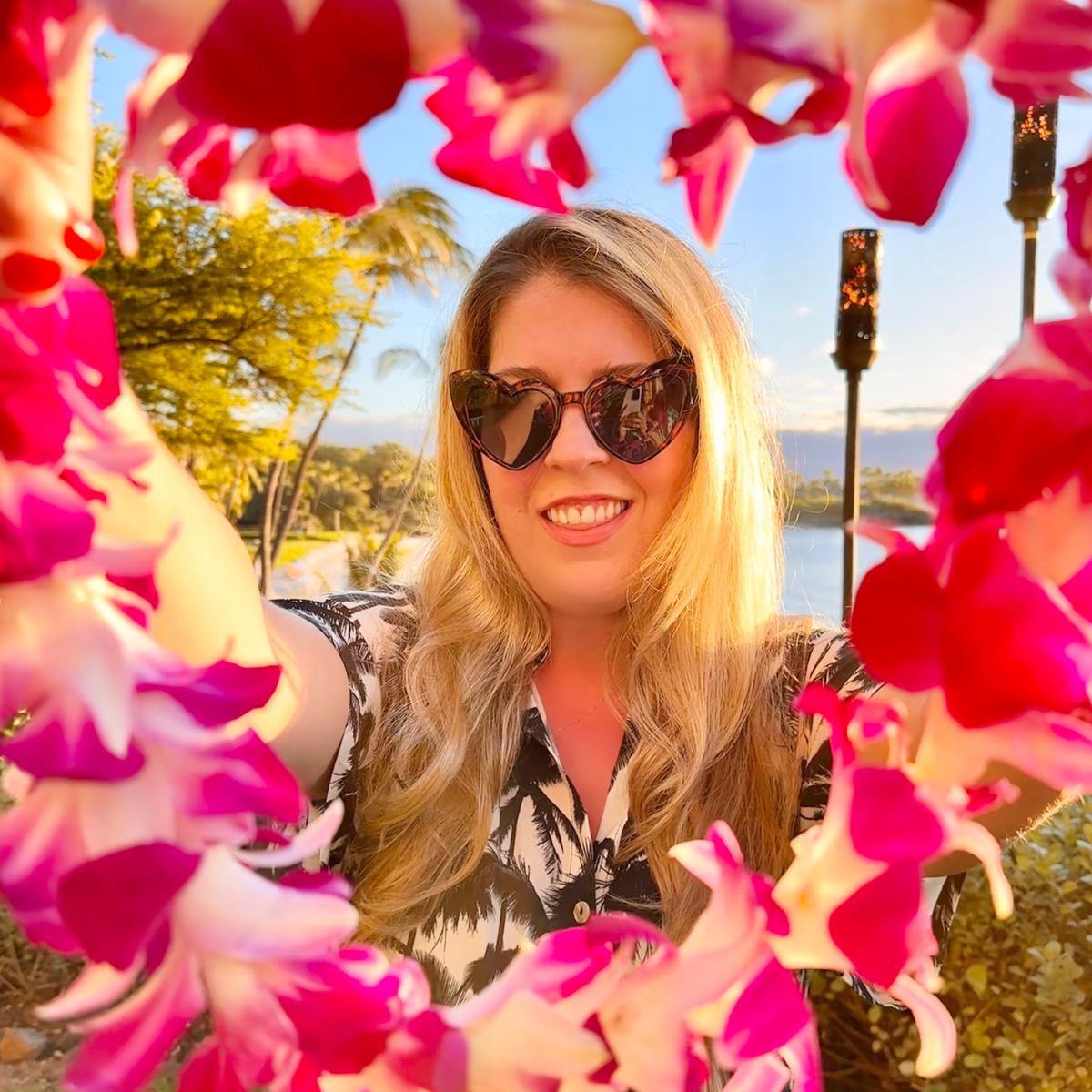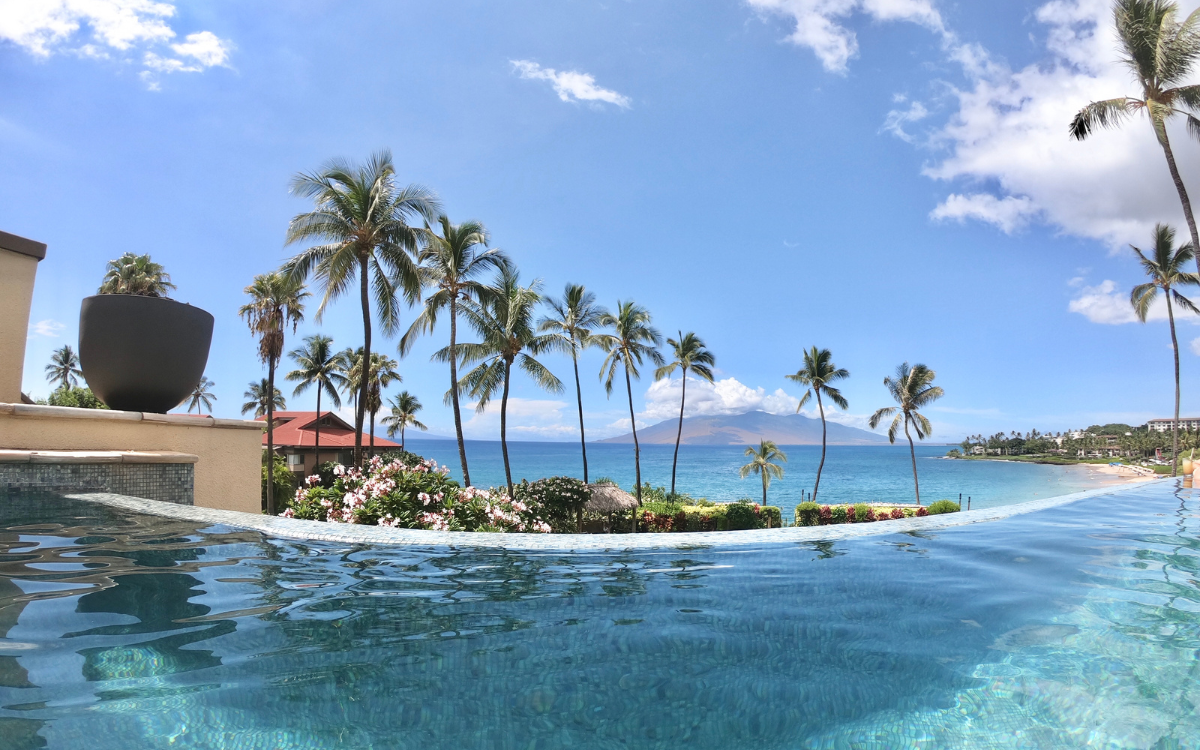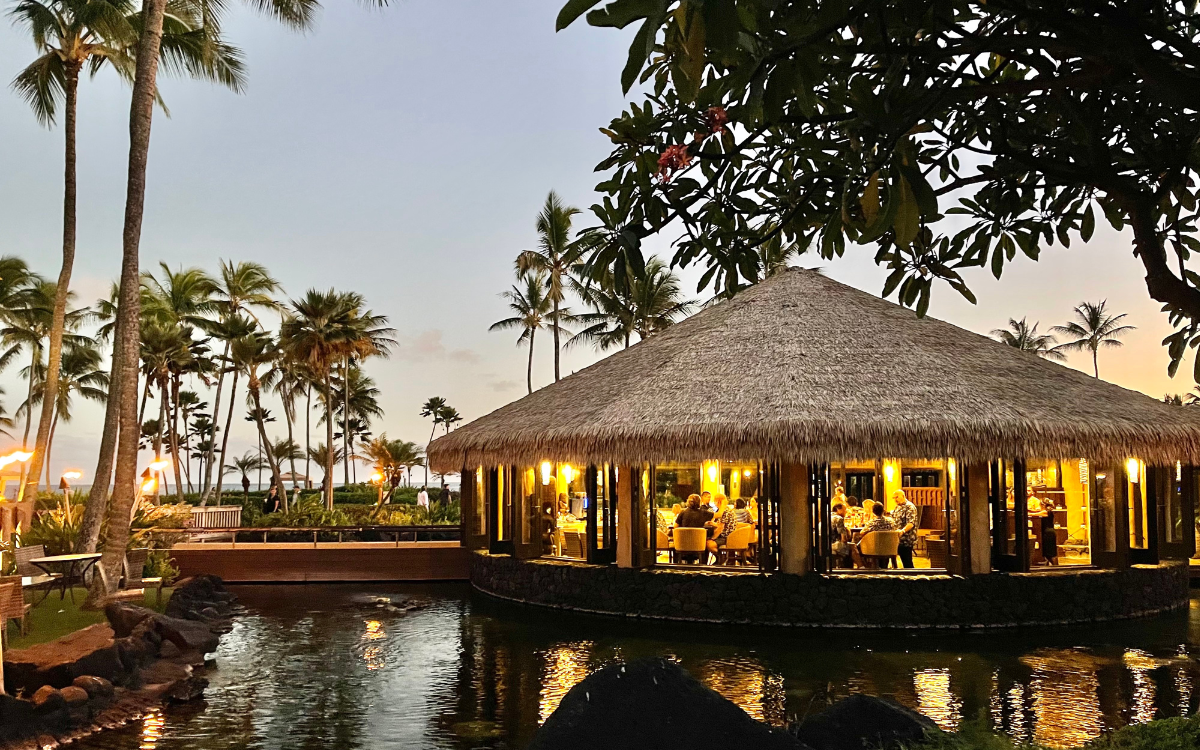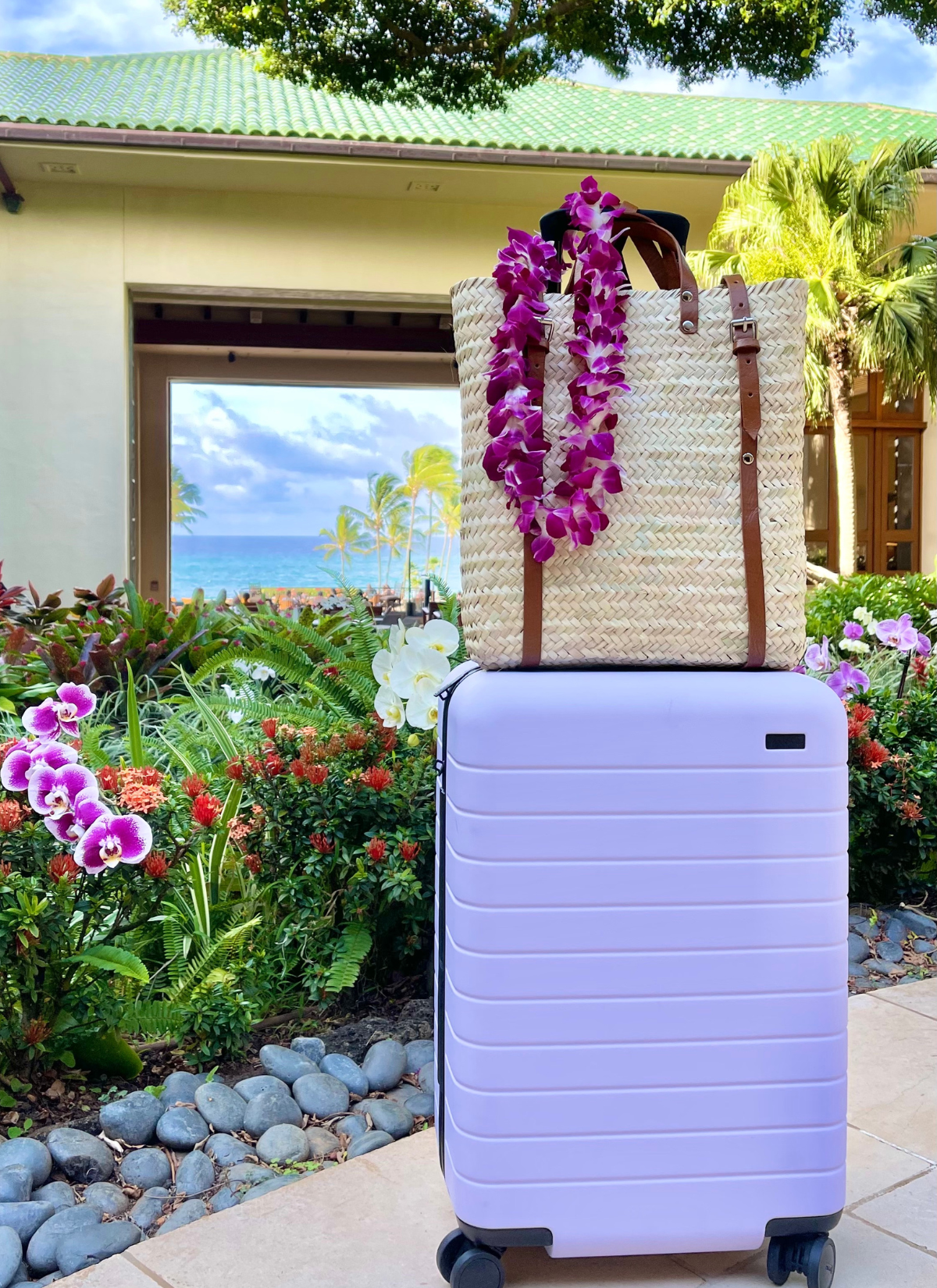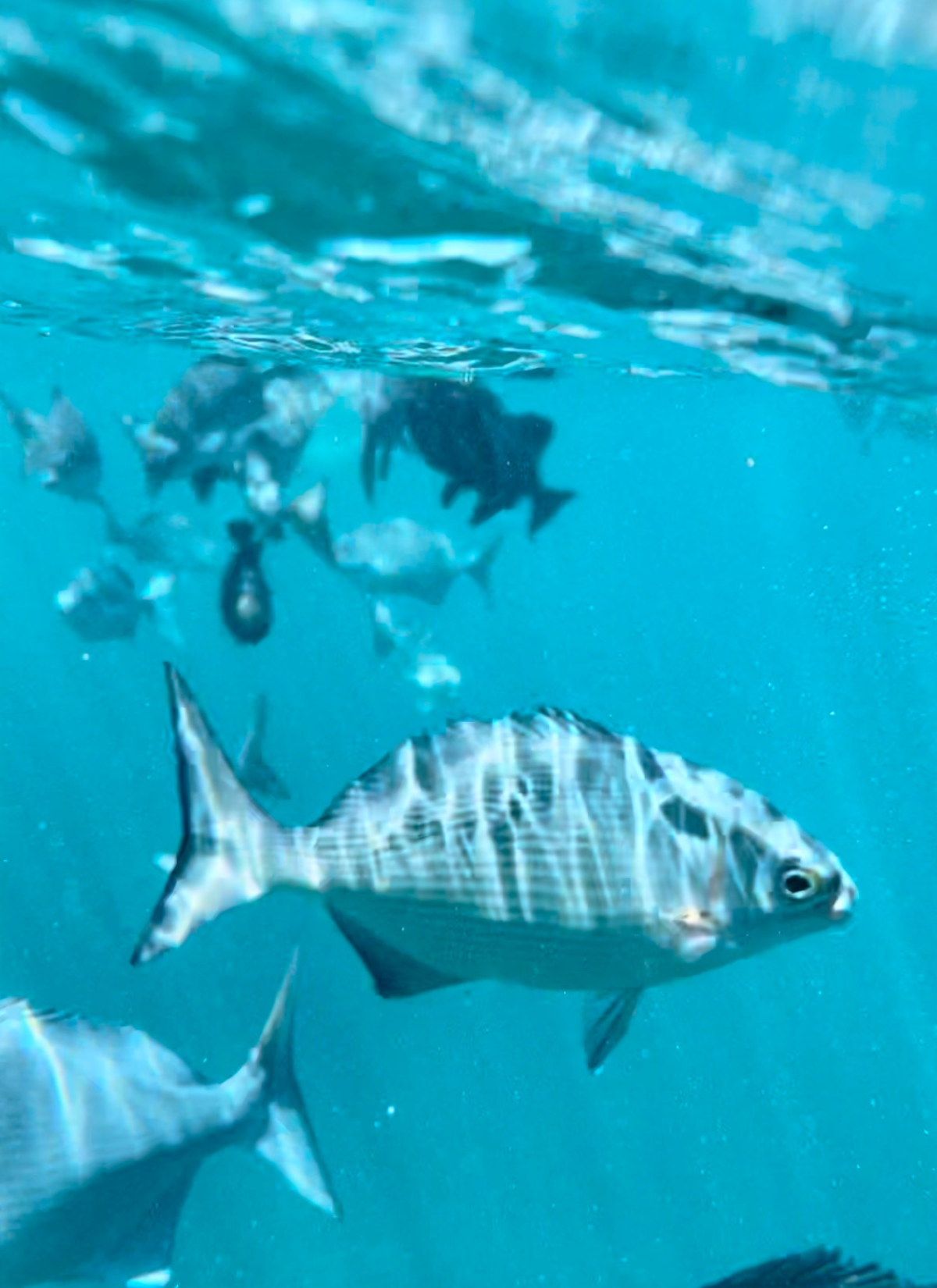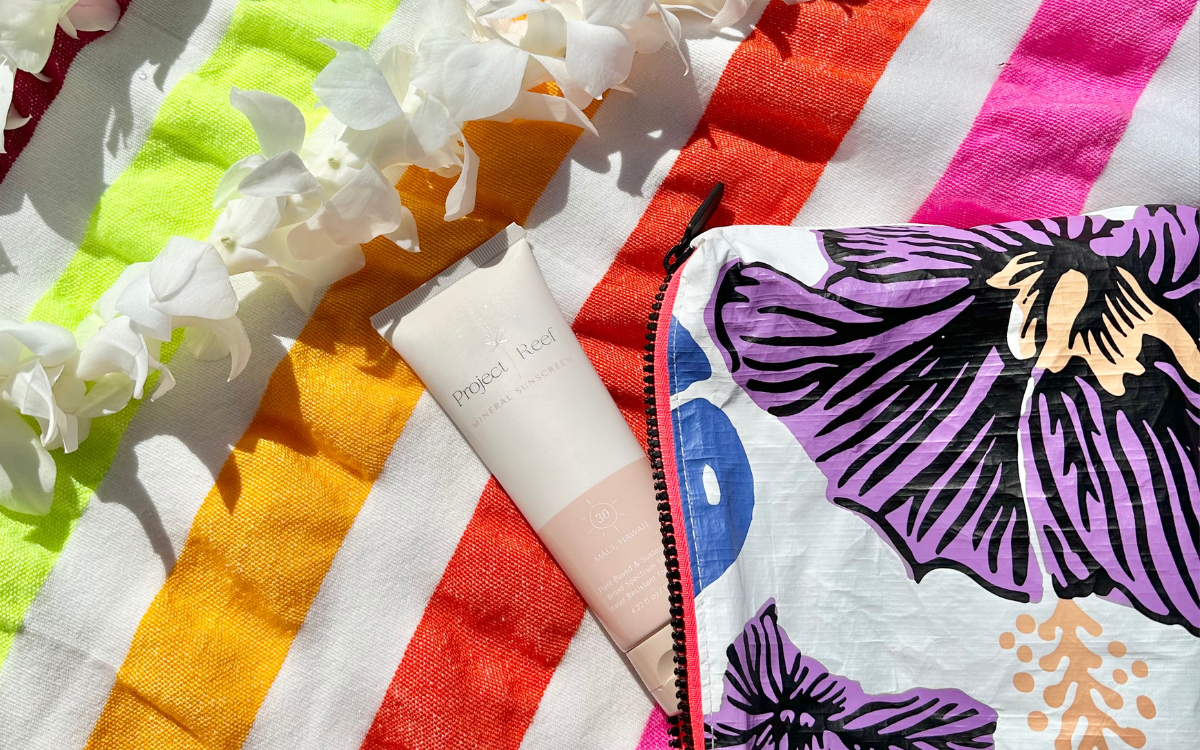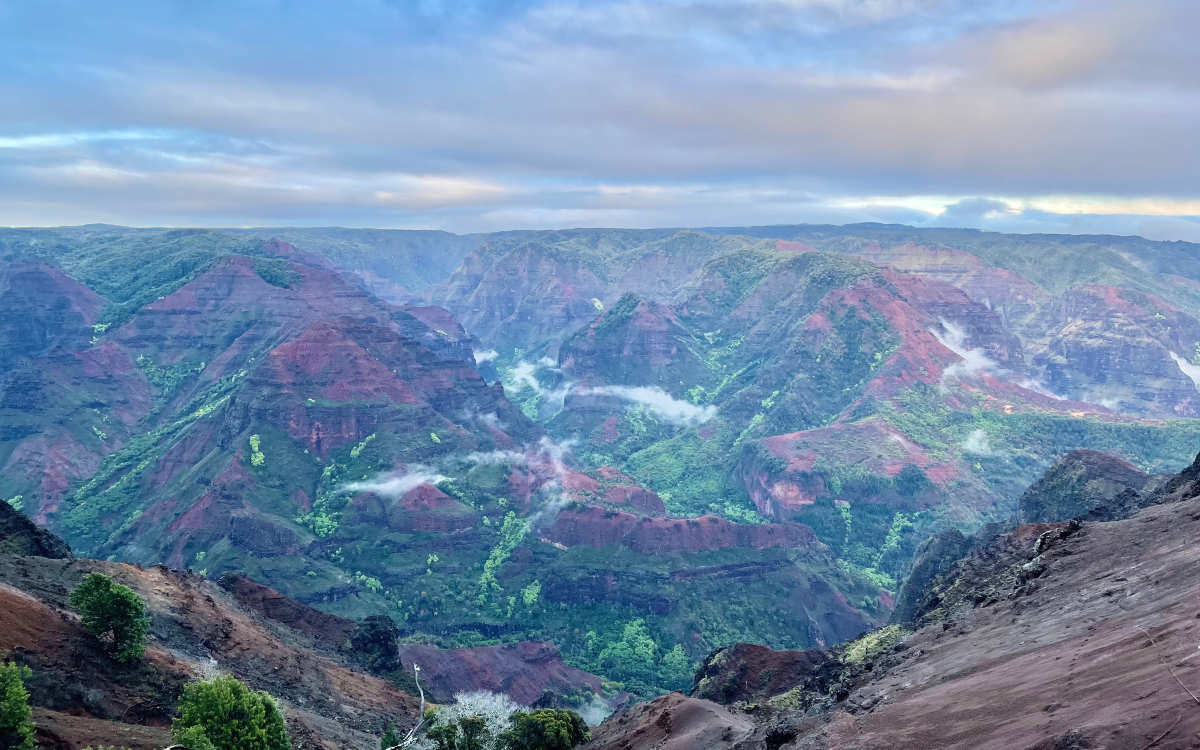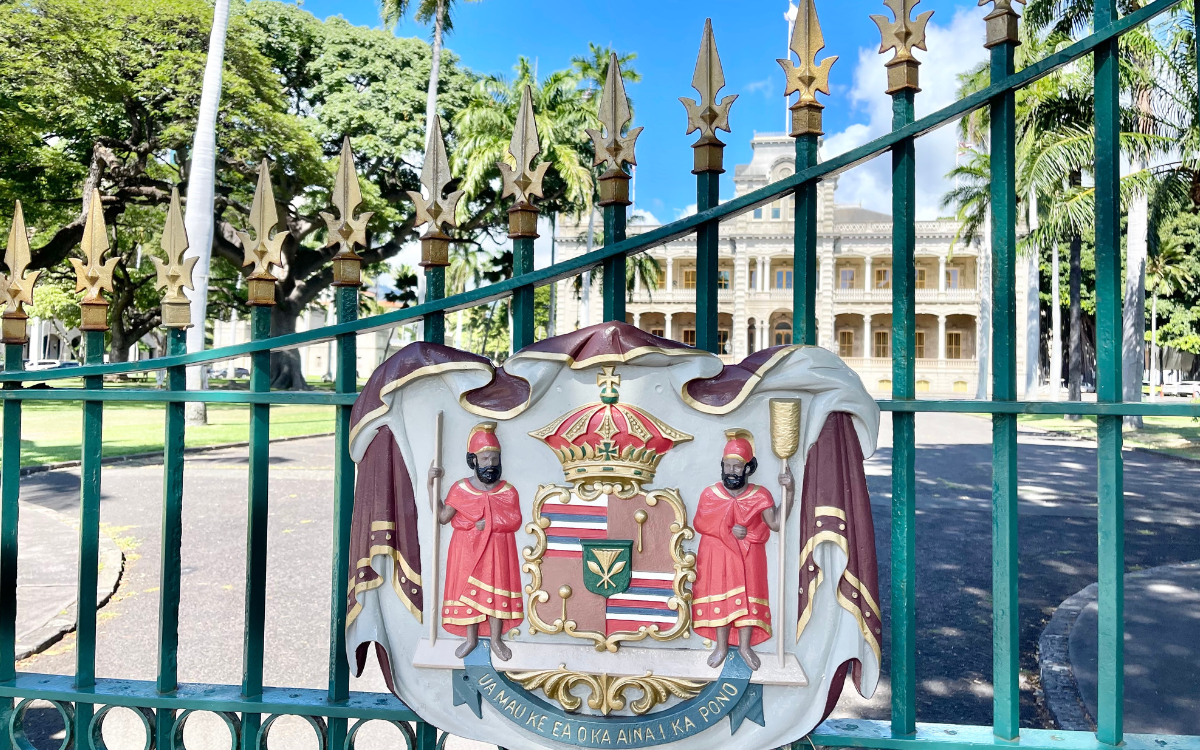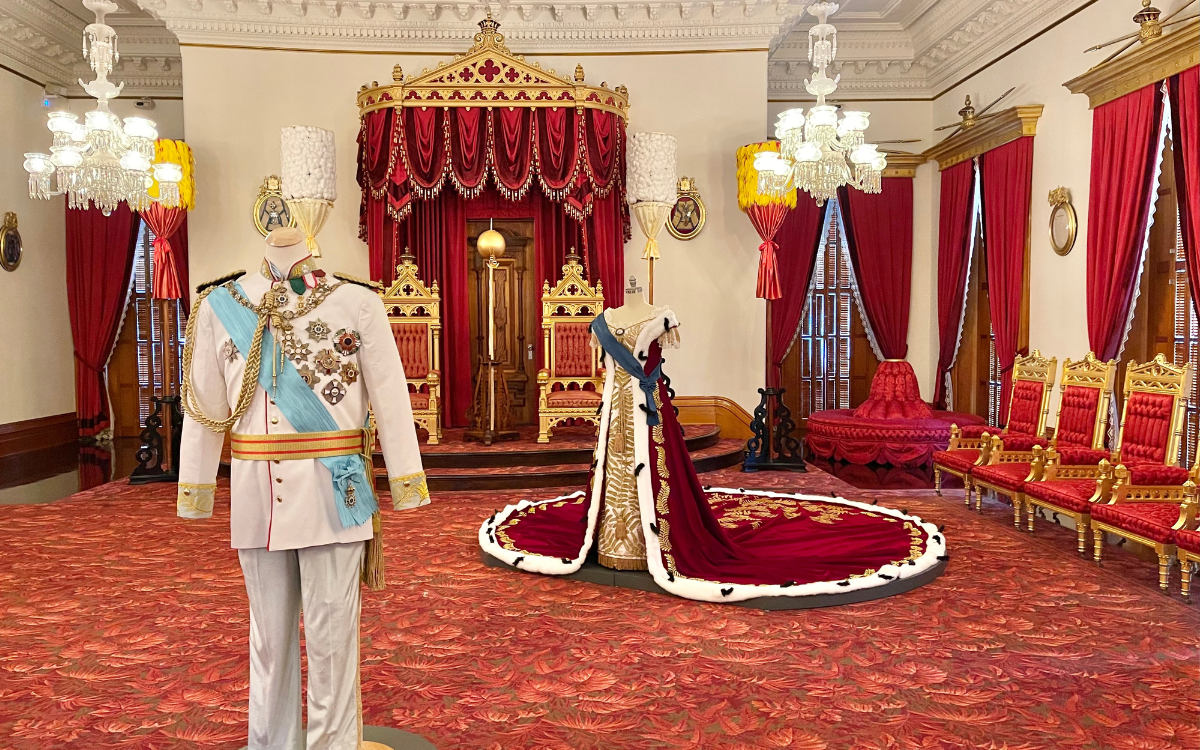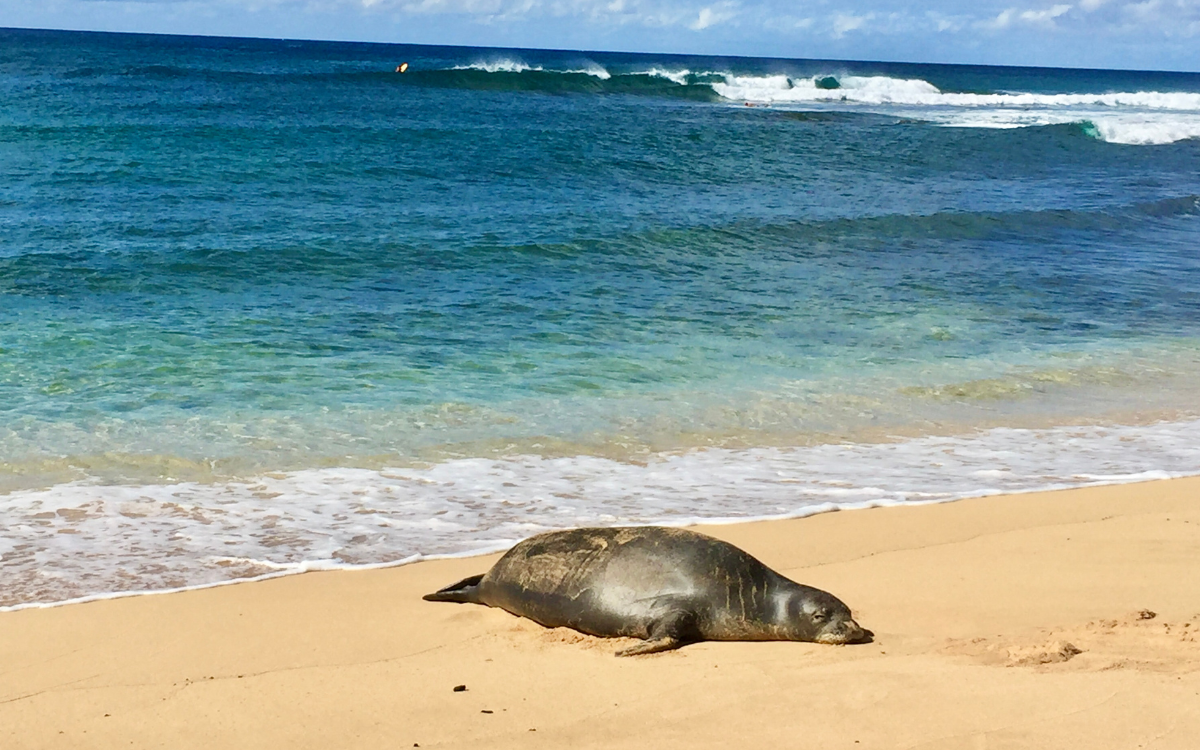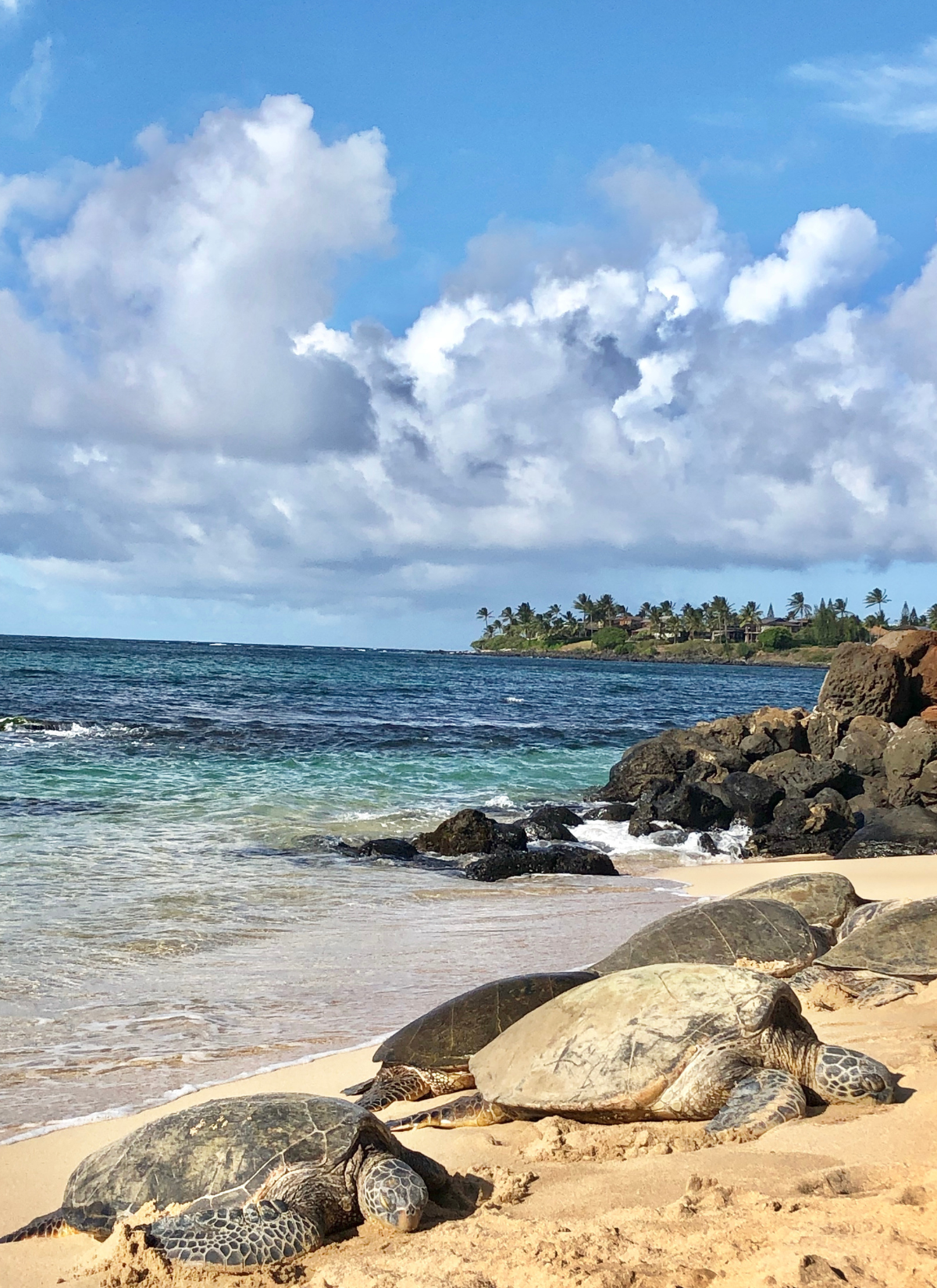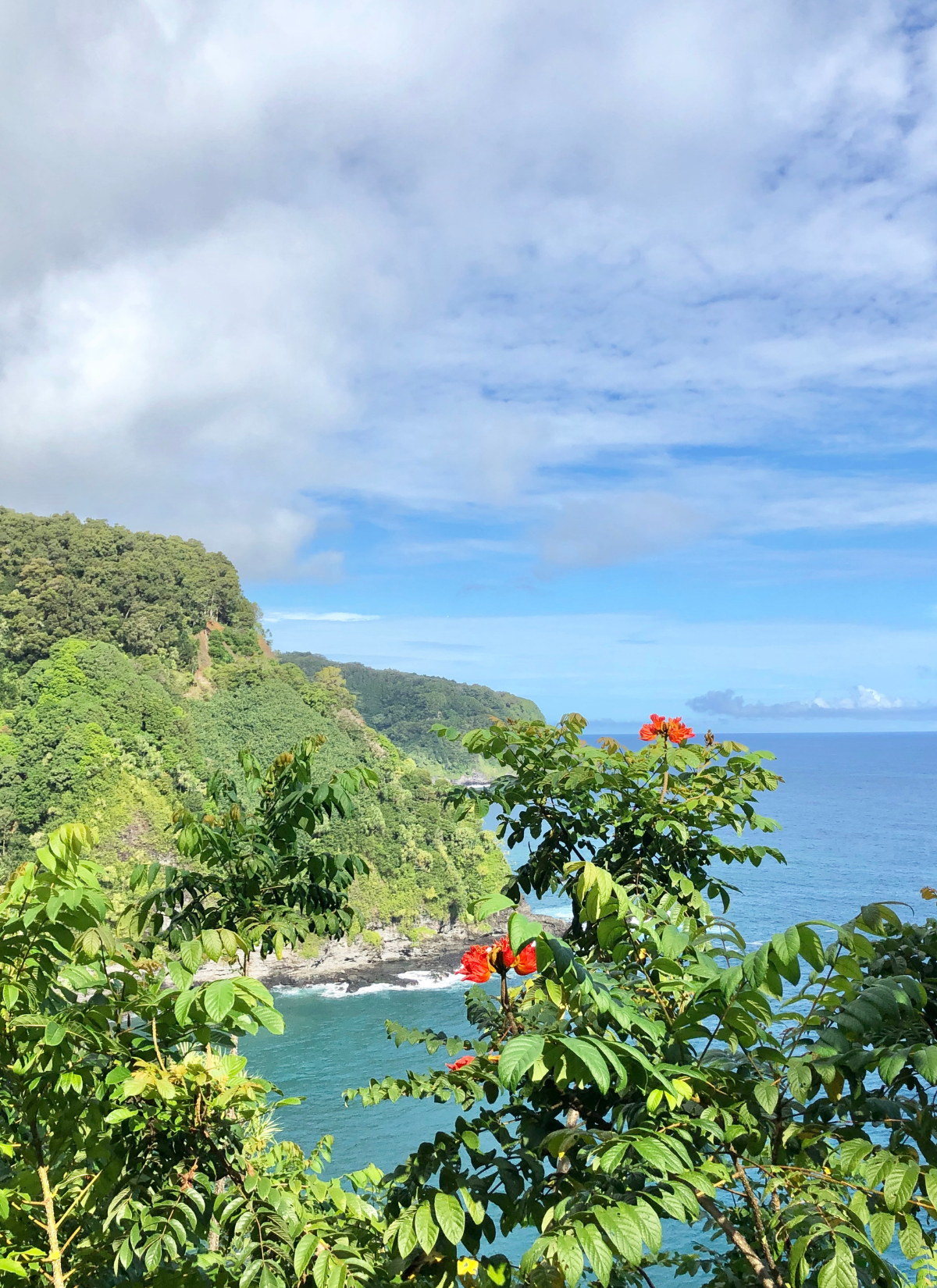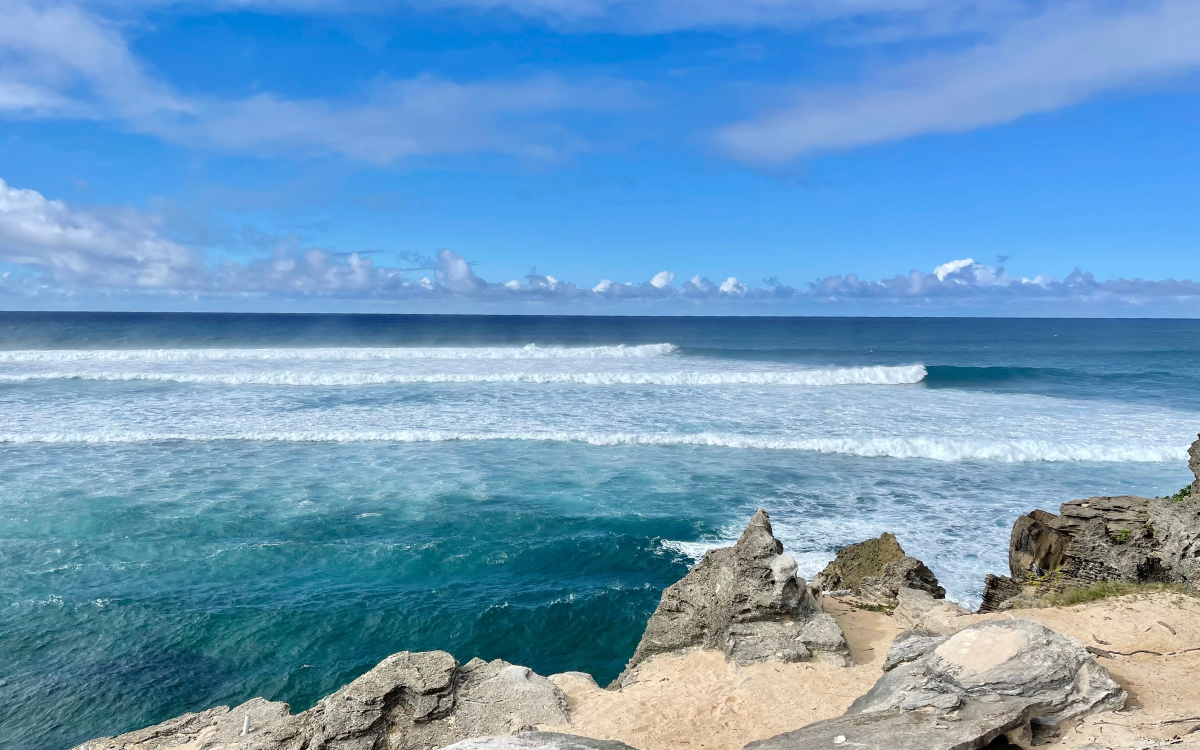Hawaii Travel Tips: The Top 25 FAQs I Get Asked about Hawaii
You’re planning a trip to Hawaii…wahoo!! How exciting! But it can also be pretty overwhelming…I mean, how do you even know where to start?
I’ve rounded up the top 25 questions that I get asked about planning a trip to Hawaii and trust me…these are the Hawaii travel tips you NEED.
Hawaii Travel Tips
This post may contain some affiliate links, which means I’ll make a little money on anything you choose to purchase. But of course, I only recommend my absolute favorites to you. Thank you for supporting the brands that make HulaLand possible.
Here’s a quick “table of contents” for what’s in this post:
- Early Stages Planning
- How many islands are in the Hawaiian Island chain?
- How big are the islands?
- Which island is best?
- When is the best time to go to Hawaii?
- When is whale season?
- Should I book airfare or accommodations first? And when?
- Getting There
- What’s the time difference?
- What airport to fly into?
- How long is the flight to Hawaii?
- What’s the best airline to fly to Hawaii?
- Any tips for handling the long flight?
- Is the jet lag bad? Tips for dealing with it?
- Where to Stay
- Should I book a hotel or a condo?
- What are the best hotels on Maui? Kauai? Oahu? Big Island?
- How to save money on hotels?
- Is Airbnb illegal in Hawaii?
- Activities & Reservations
- Do I need to rent a car?
- What are the “must do” activities?
- Is (fill in the blank) worth it?
- Do I need restaurant reservations?
- Packing & What to Bring
- What to pack?
- What’s this about reef safe sunscreen?
- Culture & Background Info
- How do you pronounce Hawaiian words?
- Can you give me a quick rundown of Hawaiian history?
- Any local customs or rules I should know?
Early Stages Planning
(1) How many islands are in the Hawaiian Island chain?
There are four main Hawaiian Islands:
- Oahu
- Maui
- Kauai
- Big Island (also Hawaii)
There are two smaller islands near Maui:
- Molokai
- Lanai
And there are two other islands that aren’t open to the public:
- Kaho’olawe
- Ni’ihau
Oahu is the main island (home to Honolulu-the state’s capital, Waikiki, and over a million people) but it’s not the “Big Island.”
(2) How big are the islands?
The Hawaiian Islands were formed by volcanic eruptions and the age of each island inversely corresponds to its size (and some of its features).
Kauai is the oldest island (formed almost 6 million years ago) and also the smallest island. Oahu is the second oldest island and second smallest. Maui is the second youngest island (formed about 1.3 million years ago) and second largest island. And the Big Island comes in as the baby island and the only island with ACTIVE volcanoes which means that it’s still growing!!
Maui and the Big Island are the only islands where you’ll find the dramatic black sand beaches (formed when lava meets the ocean) because they’re still relatively young. Oahu and Kauai are the islands with the most dramatic green jagged mountains because they’re older and have suffered more erosion.
So in terms of size: Big Island > Maui > Oahu > Kauai
And in terms of age: Kauai > Oahu > Maui > Big Island
Molokai and Lanai were originally part of Maui but as the islands have sunk, they’ve become three separate islands.
While there’s a big size difference between Kauai and the Big Island, generally speaking these are not tiny islands like you’ll find in the Caribbean. Going from one end of the island to the other could take hours (both because of their size and also because of a lack of direct roads).
(3) Which island is best?
As far as which island is best or which you should visit, there’s not really a definitive answer. And anyone who gives you one has either only been to that island or has a big bias (my bias is Maui ; )
Each island is fairly unique and has a lot to offer. While each island has a handful of attractions (natural or manmade) that you’ll only find on that island, EVERY island has supherb beaches, snorkeling, water sports, resorts, etc.
In other words, your “dream Hawaiian vacation” can be had on each island.
If you’re trying to decide which island would be best for YOU, I’ve got a whole post breaking down the different islands here >>> Which Hawaiian Island Should You Visit?
But here’s a quick rundown:
Oahu: This is the most visited of the Hawaiian Islands. This is where the capital, Honolulu, is located as well as world famous Waikiki Beach. Pearl Harbor is also on Oahu as well as the north shore surf scene with big breaks like the Banzai Pipeline and Waimea Bay.
Maui: Maui is known as the “honeymooner’s isle” and draws many celebrities looking for peaceful seclusion. Maui is famous for its beautiful beaches, winding Road to Hana, and gorgeous sunrises from the summit of Haleakala. It’s also the best island for whale spotting.
Kauai: Kauai is the oldest of the Hawaiian Islands and also the smallest. Its most famous sites are the Napali Coast and Waimea Canyon. Kauai is very “country” and feels less developed and spoiled than some of the other islands.
Big Island: The Big Island (also just called “Hawaii”) is…you guessed it…the biggest of the islands. It’s also the newest. Many people mistakenly think that Oahu is the Big Island but we’re talking about two separate islands. This is where you’ll find Hawaii Volcano National Park, the only active volcano in Hawaii.
Lanai: Lanai is a small island off the coast of Maui and is easily accessible as a day trip. You’ll find two Four Seasons on the island but little else. It’s known for its rugged beauty.
Molokai: Molokai is also right off the coast of Maui. Molokai is probably the most “Hawaiian” of all the islands. It’s also the least visited. Its major attraction is Kalaupapa National Historical Park, which was originally established as a leprosy settlement in 1866.
(4) When is the best time to go to Hawaii?
These days most people are planning their vacations around work/school/holiday schedules and generally have an idea about when they’re going to go, but if you’re wide open and trying to pick the best time to go to Hawaii, here are a few things to think about:
Weather
As far as weather goes, Hawaii is pretty temperate year round, but their seasons technically match ours on the mainland. Our summer is their summer and our winter is their winter.
“Winter” is a relative term in Hawaii, but what it mostly means are big waves and more rain. Winter is the wet season in Hawaii so while most resort areas on the Hawaiian islands occupy the leeward (dry and sunny) side of the island, if you’re venturing to the north shore or any jungle areas, you’ll likely experience more rain in the winter months. It’ll also be much lusher and greener and you’ll see more waterfalls.
The winter months also bring big swells and surf competitions (on Oahu) and many stellar snorkeling spots (Honolua Bay on Maui, Waimea Bay on Oahu, and Tunnels on Kauai) aren’t snorkelable (is that a word??) in the winter.
The difference between “winter” and “summer” is a bigger deal to locals than tourists. Unless you’re visiting the higher elevation areas of Maui and the Big Island, you aren’t likely to notice much of a difference in the temperature (air or water). Just remember, winter generally means more rain. And while hurricane season in Hawaii is technically June-November, hurricanes are pretty rare.
The Cheapest Time to Go to Hawaii
Well, it’s not when kids are out of school ; ) Whenever kids are out of school is high season…the summer and the winter holidays are booming, ESPECIALLY around Christmas and New Years.
Airfare skyrockets around Christmas and you’ll pay a premium at every resort and condo in the islands. If you’re traveling on a budget, avoid Christmas! I would block out the last two weeks of December and the first week of January.
June, July, and the first half of August are when summer crowds flock to Hawaii. Though nothing like Christmas in terms of crowds and prices, the summer months still attract a fair number of visitors and airfare prices sometimes reflect that. If you’re working with some kind of external factors (school schedules, ability to take vacation days from work, etc.) summer is still a good time to plan a trip to Hawaii.
You may not find airfare or accommodations at their rock bottom, but you can still find plenty of deals during this time of year.
But the VERY best time to go to Hawaii is during shoulder season in the fall. I’ve been to Hawaii pretty much all times of the year and I’m constantly monitoring prices on flights and hotels and I consistently find mid August through mid October to be the cheapest time of year to go to Hawaii.
You can find great airfare bargains during this time. Kids have just started back to school (an end to the busy summer travel season) and holiday travel hasn’t started yet so it’s a nice little lull.
You’ll have mostly summer weather although October is usually a transition month.
The only drawback to visiting Hawaii during this time period is that it’s technically hurricane season, but hurricanes are extremely rare around Hawaii so this isn’t much of a factor.
(5) When is whale season?
Humpback whales migrate to the Hawaiian Islands every winter to feed, breed, and have their babies. Official whale season in Hawaii is December 15 through May 15, but I’ve never seen a whale with a calendar so it can be hit or miss ; )
The first ones start arriving by late October or early November but they’re going to be few and far between and usually not near the shore. And you’ll usually have pretty good success seeing them through April. But February is PEAK whale season so if whale watching is a major goal of your trip, go mid January to mid March.
And while whales can be seen throughout all of the Hawaiian Islands, they’re most concentrated around Maui. They’re really drawn to the warmer shallow waters between Maui and Molokai and Lanai.
***Want to save major $$$ on your trip to Hawaii? I get asked ALL the time how I’m able to travel so often to Hawaii and stay at really nice resorts. Well, my favorite travel hack is cashing in points to score free airfare and free nights at some of Hawaii’s most high end resorts. Read my full guide on the exact system I use to max out credit card rewards here. Seriously, it’s going to save you soooo much money.
(6) Should I book airfare or accommodations first? And when?
The two biggest things you’ll need to book for your trip is your airfare and your accommodations. But which should you book first? Well, it depends.
If you’re flying a whole crew to Hawaii, you may be more focused on finding the cheapest airfare possible and just take whatever rooms you can find. In that case, nail down your airfare first.
I personally am more accommodation focused. Where I stay can really make or break a trip for me and I usually have a fancy resort or two that I’ve got my eye on so I’ll do the research and pick dates that are going to save me the most money on the room (or when I can get a good value on point redemption through reward programs) and then I usually just pay whatever the flights are for those dates.
When you’re talking about luxury beach resorts, if you pick the right dates you can potentially save $$$ EACH NIGHT which is usually more than you could ever save on a plane ticket.
But I like to stretch my dollars as far as possible so I try to find a sweet spot between saving money on BOTH airfare and the room and book everything at the same time.
It takes some planning (and maybe a legal pad or spreadsheet full of options for dates and prices listed out), but I think it’s worth it to have the best trip possible.
There are a million ways to do this, but here’s what I do:
I generally know which island(s) I want to go to and I have a window of time (2-3 weeks) that I want to take the trip. I price out all of my hotel options and flight options during that time period and then pick my specific dates based on what’s going to work out best. I usually only go to Hawaii for about 6 nights at a time so if I’m flexible enough to look at a whole month (or even just 2-3 weeks) of dates you can find a LOT of wiggle room on prices.
So when should you book all of this?
Southwest Airlines (pretty much the only airline I fly anymore) opens up the booking window 6-8 months in advance. They’ll announce on what date the booking window will open in advance. Most other airlines open up 11 months in advance.
If you’re committed to flying Southwest and you’re traveling during a busy time of year (or you just need very specific dates), you’ll want to be ready to book right away when the schedule opens.
If you’re flexible, I usually find 4ish months out to be the sweet spot for pricing. Again, that’s if you’re flexible.
As far as a timeline for booking rooms, if you’re traveling during peak times, many places book up almost a year in advance (I’m looking at you Maui at Christmas).
Of course, you’ll usually be able to find some place to stay if you wait until the last minute, but booking your accommodations in advance will insure that you have the most options available to you. This is especially relevant if you’re looking at condos or vacation rentals. The best properties (and best deals) will start to disappear if you wait too long.
4-8 months out on booking accommodations is pretty reasonable unless you’re needing something super specific (or like I said…something over Christmas).
I usually aim to book my Hawaii trips 3-4 months in advance, but I’m pretty flexible, always have a handful of options that will work, and I’m only traveling with one or two other people.
Getting There
(7) What’s the time difference?
The Hawaiian Islands run on the Hawaii-Aleutian Time Zone (HST). Hawaii also doesn’t observe Daylight Savings Time so they’re 3 hours behind West Coast time (6 hours behind East coast time) when we’re on Daylight savings time, and 2/5 hours when we’re not.
(8) What airport do I fly into?
The four main islands are all easily accessible from the US mainland. Molokai and Lanai are easily reached from Oahu or Maui. Here’s a list of each island’s major city and airport code:
Oahu: Honolulu (HNL)
Maui: Kahului (OGG)
Kauai: Lihue (LIH)
Big Island: Kona (KOA) or Hilo (ITO)
Molokai (MKK)
Lanai (LNY)
The only interisland ferry transportation is between Maui and Lanai.
(9) How long is the flight to Hawaii?
Well it depends where you’re traveling from. From the west coast, flights are only 5-6 hours (longer going there, shorter coming home).
From the midwest, flights can be 7-9 hours (hey, America is a big country and there’s a big difference between Denver and Atlanta).
And from the east coast, flights can be 10+ hours (yikes!).
Now I have not flown directly from the east coast, but I have flown direct from Dallas, TX (8 hour flight) so I have some personal experience here. I will say, these are DIRECT flight times (my preferred method of travel), but the majority of flights to Hawaii connect on the west coast so you could break it up if you want to.
(10) What’s the best airline to fly to Hawaii?
I see people asking this question on the internet soooooo often. Here’s the thing…the best airline to fly to Hawaii is 100% dependent on where you’re flying from. If you have an airline that offers a direct flight from your home airport, that’s a no brainer. I would never make an extra connection or go out of my way to fly on any airline that people say is “better.”
And that includes Hawaiian Airlines. A lot of people think Hawaiian Airlines is really exotic and this premier airline, but the reality is that flying in 2023 isn’t glamorous. Even if they’re playing ukulele music and the flight attendants are wearing flower hair clips.
The best airline to fly is the one that’s going to be the easiest/most convenient flight from your home airport.
Now, this is mostly relevant if you’re flying economy in the main cabin. If you’re flying first class, I’m sure there are amazing experiences to be had. If you’re looking for a luxury flying experience, my advice would be to look up the exact aircraft that the different airlines are flying on each route to verify that the configuration/offerings will be worth upgrading for.
Generally speaking, these are the airlines that offer flights from the US mainland to Hawaii:
American Airlines
Delta Airlines
United Airlines
Southwest Airlines
Hawaiian Airlines
Alaska Airlines
The trick is finding the best of these options that offer either a direct flight from your home airport to the Hawaiian Island you’ll be visiting or at least one easy connection.
Whichever airline you choose, be sure to follow the cardinal rule of air travel. ALWAYS BOOK DIRECT. Under no circumstances should you ever book airfare through a third party company like Expedia, Travelocity, and I hate to say it but even Costco. Air travel is WILD. Wildly undependable.
Flights get delayed, they get canceled, plans get derailed. And when you’ve booked through a third party, you can’t deal with the airline directly. You can literally be in the airport at the gate and depending on what the problem is (flight canceled, flight delayed and you’re going to miss your connection, etc) the gate agent may not be able to help you.
You haven’t known frustration until you’re literally standing in front of a human that handles flight changes for the airline and they can’t help you because you have to call Expedia and be on hold with them for 6 hours instead. When you book with a third party, THEY hold the reservation, not you.
Here’s the other thing…these booking sites hardly ever have prices any cheaper than the actual airline anyways. Do your research using Expedia or whoever you like to shop and then go directly to the airline to book.
(11) Any tips for handling the long flight?
Charge all of your devices: Make sure everything is fully charged, bring your cords, and I like to throw in a battery pack for good measure.
Download all of the things: Whatever you’re binging on Netflix, your audiobook, your favorite Spotify playlist. You may not have access to Wifi on the plane.
Nothing beats an actual book: A screen is great for watching movies and show, but for reading, nothing is better than an actual book for me.
Bring the right headphones: So many people use wireless headphones now, but if you’re wanting to take advantage of the in-flight entertainment, you’ll need the old fashion kind with the jack (the round jack not the flat one the iphones use!).
Bring your own food: I cannot stress this enough. Airplane meals I’ve had on flights to Hawaii have ranged from “meh,” to “I’d rather be hungry,” to “if I eat that I will throw up” to being completely non-existent since COVID. If you have time before your flight, eat a good meal (but nothing too heavy) and grab a few snacks. If you’re tight on time, plan ahead and pack a meal.
Drink so much water: While you want to drink plenty of water once you get on the plane, if you’re already dehydrated, it won’t help as much. So make sure you drink plenty of water the day or two before your flight.
Get up and move around: Your legs will thank you. It will help with circulation and swelling. Also, when you’re drinking a lot of water, it will force you to get up and go to the bathroom so win/win.
Wear warm clothes and pack a blanket: Yeah, you’re going to the tropics, but they’ll let you change clothes once you get there. I always freeze on planes and there’s nothing I hate more than being cold. I always wear leggings, a tank top, a long sleeve shirt and a sweatshirt. Again, I’m a cold wimp, but also a blanket always makes me feel cozy even when I’m not cold.
Watch out for germs. This isn’t just a COVID thing. Airplanes (and airports) have always been gross. Take antibacterial wipes to wipe down the surfaces around your seat. Bring hand sanitizer. You won’t want to have to wash your hands in that tiny bathroom. Bring face towelettes. I don’t know about you but I feel so grimy after a long flight and being able to clean my face really helps. Take an Emergen-C (or Airborne). Traveling can wreck your immune system so I always take an Emergen-C packet everyday for a few days after flying.
(12) Is the jet lag bad? Tips for handling it?
Hawaii does not observe Daylight Savings Time so the time difference depends on the time of year. It’s 2-3 hours behind west coast time, 4-5 hours behind Central Time, and 5-6 hours behind Eastern Time. So your jet lag experience will vary greatly depending from where you’re traveling. If you’re going from the west coast, you may not notice it much at all.
Here’s what I’ve found after traveling back and forth a lot: It’s way harder to adjust to coming home than going there. Mostly this is due to the direction you’re traveling, but I also think adjusting to a non-vacation routine just isn’t as much fun as the other way around.
So, what’s the easiest way to adjust? Personally, when I’m traveling (4-5 hour time difference from where I live) for a week or less, I try to stick to my home schedule (wake up and bedtime) as much as possible. It’s easy to get up at 5 or 6 in Hawaii with the time change and since sunrise is so early, I like to get my day started early (a good strategy for beating the crowds at popular spots) and hit the hay pretty early. This isn’t too hard in Hawaii as outside of Waikiki there’s not much nightlife. This makes the transition back home a lot easier.
Now if you’re trying to acclimate to Hawaii time…most flights to Hawaii arrive in the afternoon. Do not nap! Stay awake and busy as late as you can. If you can make it until 8 or 9 PM, I consider that a victory!
Where to Stay
(13) Should I book a hotel or a condo?
Most people usually have a personal preference one way or the other. If you want the full Hawaiian vacation experience, you cannot beat staying at a beach resort. If you want more space and to save some $$$, you cannot beat staying in a condo.
If you’re spending a full week on one island, here’s my winning recipe for the perfect trip:
- Book the first 4-5 nights of your trip at a budget friendly place (whatever that looks like for you). Book a condo or vacation rental and plan to do the bulk of your “exploring” while you’re staying there.
- Book the last 2-3 nights of your trip at a nice beach resort and just enjoy your “vacation.” Pool, beach, spa, golf, luau, long walks, shopping. Whatever.
You’ll get the best of both worlds. You won’t have to sacrifice getting to experience “resort life” in Hawaii (IT IS THE BEST!) and you also won’t be spending so much money that you feel sick about leaving the resort to go explore the island. It’s win/win.
If you’re looking for a condo or vacation rental for your trip, I always book with Vrbo. They’ve got the largest selection of rentals you’ll find anywhere and you can easily filter to find exactly what you’re looking for. Need a specific number of bedrooms and bathrooms? Narrowed it down to a certain location? Want flexible cancellation terms? Need to stay under a fixed budget? Click here to search for Hawaii vacation rentals for your trip.
(14) What is the best hotel on…Maui? Kauai? Oahu? The Big Island?
Hotel reviews and comparisons are kind of my jam ; ) Peruse these posts for all the details you could possibly want:
Maui
Where to Stay on Maui: My Favorite Hotels & Condos
The Best Hotels in Wailea (I’ve Stayed at Them All)
Oahu
My Favorite Boutique Hotels in Waikiki
Where to Stay on Oahu BESIDES Waikiki
Kauai
Where to Stay on Kauai: Princeville vs Poipu
Big Island
Where to Stay on the Big Island: My Favorite Beach Resorts
(15) How to save money on hotels?
Okay, so you’ve got your heart set on a luxury Hawaii beach resort experience…and then you see the prices!! Yikes.
There are three big things I do to save money on hotels: 1) Split my stay, 2) Pick the best time of year, and 3) Pick the best specific dates.
Split Your Stay
Most people that are traveling all the way to Hawaii, while wanting a beach vacation, also want to SEE Hawaii (totally different from places like Mexico where you’re mostly there to lounge). If this is you, I suggest splitting your trip and spending the first part of your trip at a more affordable place while you do the majority of your activities and exploring. Then move to a nice resort for the last part of your trip to spend a few days just relaxing and “being on vacation.”
On one of my last trips to Maui, I went with a friend who had never been before so we planned to do a lot of things but we also wanted the big Maui resort experience. We spent the first three nights at an Airbnb on the north shore and did the Road to Hana, sunrise at Haleakala, the upcountry, the north shore, etc. and then moved to the Four Seasons for three nights and did…nothing.
Just kidding but we really only stayed around the resort doing the beach, the pool, the spa, the tennis, the shopping, the eating. You know. We actually did an early morning snorkeling trip that picked up right near the resort too. You get the idea. It was the perfect trip. We got EVERYTHING we wanted from a Maui vacation and ended up saving a lot of money.
So it’s not all or nothing when you pick a place to stay.
Choose the Best Time of Year
Hawaii’s peak season is summer and the winter holidays. There’s really not an off season in Hawaii because the weather is pretty perfect year round and there’s so many international visitors, but the winter months (after the holidays) and the spring months are usually less than peak season. And the end of August (when the kids go back to school) up through the start of the holidays is slower as well.
Now here’s my secret: the end of August through September is when you’ll find the absolute lowest resort prices of the year. People in the tourism industry call it “couples season” because family travel dries up considerably. Demand is down and prices reflect it. So if you’re dreaming of staying at a nice resort on the beach, but can’t quite stomach the prices you’re seeing during summer or peak winter months, have a look at August and September.
Pick Your Dates Strategically
The price of any hotel can change pretty drastically throughout the month and even the week. While September is pretty much the cheapest you’ll find rates for any resort in Hawaii, there’s still a lot of variation within that month and at other times of the year.
When you’re looking at a specific place, pull up the monthly price calendar where you can see the price for every single night (I do this in the Marriott Bonvoy app, in the sidebar of Google Search in the “Compare Prices” section, etc.)
The prices throughout the month can fluctuate a LOT so if you cherry pick the exact dates of your stay it may be the difference between being able to afford staying at that particular hotel or not.
Why does the price fluctuate so much? It could be demand pricing meaning dates around holidays or peak travel times are more expensive or it could mean that standard rooms are all booked for certain nights and all that’s available is a suite.
Remember: If the standard room category (aka the cheapest) is sold out for just one of the nights you’re searching for it’s going to bump you up to the next available category for the whole stay which usually means a significant amount of money.
(16) Is Airbnb illegal in Hawaii?
This is a big one folks!
Illegal vacation rentals have started to become a major problem in the last few years, but it’s starting to reach a boiling point. The rise in popularity of sites like Airbnb has resulted in a lot of property being bought by wealthy folks from the mainland (or internationally) and being rented out as short term vacation rentals to visitors. In addition to creating a housing crisis (it becomes much harder for local families to afford to be able to stay in the area), it also changes the community (i.e. more businesses and amenities catered towards tourists and less towards residents).
What does that mean for you? To get this problem under control, different counties (islands) have been passing (or starting to enforce) legislation that cracks down on illegal rentals. Lately, it’s been most dramatic on Oahu where there have been estimated to be as many as 10,000 illegal vacation rentals, but the other islands are turning their attention to cracking down on this problem.
A lot of visitors are shocked that it’s even an option to book something illegal on Airbnb or Vrbo, but the truth is those sites are just marketplaces and it’s up to YOU to use due diligence to make sure what you’re booking is on the up and up.
I’m not talking about shady listings where they’re trying to scam you. 99% of these properties are legitimate homes, apartments, ohanas (a separate dwelling on somebody’s property) either rented out by the owners or a property manager. Just like Airbnb works anywhere in the world. They range in price, size, location, and amenities. But they don’t have permits to be operating as short term vacation rentals and they’re located in areas of the island that are considered residential (we’re not talking about condos).
In short…it’s always been illegal to rent a house on a site like Airbnb or Vrbo that didn’t have a permit (the majority of them), but now they’re enforcing it.
As the renter, (right now) you won’t get fined if the owner gets caught, but you could be left with no place to stay on short notice. So basically…if you’re set on alternative forms of accommodations besides a resort, hotel, or condo, you’ll need to read up on the zoning for each island and either pick something that’s in a zone that doesn’t require a permit, or pick something that does have a permit.
I’ll be honest…there aren’t a ton of permitted short term vacation rentals on each island (outside of tourist areas where they’re mostly condos) so the ones you will find tend to be not super cheap. I will give you a heads up about a situation on Oahu…their official law is that short term rentals are any rental less than 30 days so as a work around a lot of places will say they have a 30 day minimum on Airbnb but kind of squirrel around and only charge you for the week you want to stay. It’s still illegal and it’s uncertain how it’s going to be handled.
I don’t want to scare you away from using sites like Vrbo and Airbnb, because they actually have amazing places to stay but I SERIOUSLY SERIOUSLY SERIOUSLY recommend only using them to book places in tourist zones.
On Oahu, book places in Waikiki, Ko Olina, and Turtle Bay. On Maui, book places in Kaanapali up to Kapalua and in Kihei and Wailea. On Kauai, book in Poipu and Princeville. On the Big Island, book around Kona and up around Waikoloa on the Kohala Coast. Those obviously aren’t the only places you can find legal rentals on each island, but those tend to be the major hubs.
Activities & Reservations
(17) Do I need to rent a car?
You absolutely will need a rental car. Hawaii is not an all-inclusive destination where you’ll arrive by shuttle and never leave your resort (I mean you could do that…but it’s pretty expensive just to get to Hawaii so most people want to actually see Hawaii. If you want a cheaper resort only vacation, just go to Mexico).
The islands are pretty large so unless you’re just going a few miles, taking Ubers and Lyfts aren’t really feasible (you could be talking $100 one way to go to another part of the island). Also, Oahu is the only island that has a decent bus system.
So you’ll most definitely want a rental car for your stay even if you’re staying in a resort area. I always book through Discount Hawaii Car Rentals. They’re seriously the only company I ever use. They’ll give you the very best prices, you don’t have to reserve with a credit card or pay until you show up, you can cancel and re-book anytime if you find a better rate, and they usually have a special that adds additional drivers for no fee. It’s a no brainer. Click here to check rates for your trip.
I would reserve your rental car as soon as you know your trip dates, but then keep monitoring it to see if you can find a better deal as the trip gets closer.
Rental cars are finite in Hawaii so don’t wait around too long to reserve one or you may end up having to rent a more expensive category than you need.
(18) What are the “must do” activities?
Beaches, snorkeling, water sports, luaus…all of those are things you can do on every island. But to get an idea of what makes each island unique (helpful if you’re still trying to figure out which one to visit), here are some things you can ONLY do on each specific island:
Maui
Road to Hana (Waterfalls, black sand beach, jungle, etc.)
Haleakala National Park (Sunrise)
Maui Pineapple Tour
Whale Watching (by far the most you’ll see on any island)
Snorkeling Molokini Crater
Way more details about things to do on Maui here >>> Things You Can ONLY Do on Maui
Oahu
Pearl Harbor
Kualoa Ranch (Jurassic Park filming location)
North Shore (famous surf spots)
Iolani Palace
Waikiki
More things to do on Oahu here >>> Unique Things to Do on Oahu
Kauai
Napali Coast (seen by helicopter, hiking the Kalalau Trail or a boat tour)
Waimea Canyon (“Grand Canyon of the Pacific”)
More things to do on Kauai here >>> Things to Do on Kauai
Big Island
Hawaii Volcanoes National Park
Black AND Green Sand Beaches
Ocean Rider Seahorse Farm
Kona Coffee Farm Tours
Night Snorkel with Manta Rays
More details on things to do here >>> Things You Can ONLY Do on the Big Island
What about making reservations for activities in advance?
Depending on your vacation style, you may want to just beach bum around and go with the flow or you may prefer to have a tentative schedule so you make sure you see and do everything you want.
At the very least, I recommend booking activities that you’re set on well before your arrival.
Popular luaus and activities (helicopter tours, snorkel trips, etc.) often book up months in advance so I prefer to make these reservations once I know my dates. While you’ll usually be able to book SOME luau or activity close to your departure or even once you arrive, it may not be the one you want. So don’t get caught paying a premium price for your second choice. Book activities in advance.
(19) Is (fill in the blank) worth it?
I get this question a lot, and I used to try to answer it based on my personal experience and opinions and a delicate cost/benefit analysis plus trying to figure out what the question asker’s expectations are. Here’s what I’ve come to realize….if you’re asking if something is worth it…it’s probably not…FOR YOU.
Different people have different expectations and also tolerances for spending money. Some people don’t think anything of dropping $300 on dinner for 2 and some people could never stomach that in a million years NO MATTER WHAT. Value for money and time is very subjective and everybody likes to/is comfortable spending their time and money in different ways.
Same thing when people ask if something is a “must do.” “Is Pearl Harbor really a must do?” If you’re asking, it’s probably not. For me, it absolutely is. On my first trip to Oahu, I was only there for two days and I spent one of them at Pearl Harbor. But I have friends who have been to Oahu many times, have never been, and absolutely don’t feel like they’re missing anything. So if you read a normal amount of information/reviews about something and you’re still wanting to ask if (fill in the blank) is worth it…it’s probably not.
You’re allowed to spend your Hawaiian trip however you want and in a way that you’ll feel good about. You don’t HAVE to go to a luau. You don’t HAVE to go out on a snorkel boat. You don’t HAVE to make reservations for that one restaurant everyone is talking about when the idea of spending that much money on dinner makes you feel kind of ill.
(20) Do I need restaurant reservations?
If you want to do any special/fancy dinners, these days you’re definitely going to need reservations. Mama’s Fish House on Maui is currently booking about 6 months out and on most islands, the top restaurants in the resort areas should be booked well before you arrive. Even things like spa treatments should probably be booked in advance if you’ve got your heart set on it.
Packing & What to Bring
(21) What should I pack?
I’ve got a great post about what to pack for Hawaii here >>>What to Pack for Hawaii
It’s got detailed advice about what to wear in different scenarios plus 20 specific things that you don’t want to forget to pack.
(22) What’s this about reef safe sunscreen?
Reef safe, reef friendly, organic, mineral based, chemical free…there are a lot of buzzwords floating around when it comes to sunscreen.
In January 2021, the state of Hawaii officially banned the sale of sunscreens containing chemicals harmful to coral reefs which means that you cannot buy sunscreens containing oxybenzone or octinoxate in Hawaii. Which means most of the cheap, clear spray sunscreens you get at the grocery store at home.
In October 2022, Maui County (Maui, Lanai & Molokai) banned the sale, distribution and use of non-mineral sunscreens. That means the only kind of sunscreen you can buy on Maui (and technically the only kind you’re supposed to use) is the white zinc based kind.
The general Hawaii ban (that covers ALL islands) includes two ingredients/chemicals, oxybenzone and octinoxate, which help filter UV rays, but have also been found to cause bleaching, deformities, DNA damage, and death in coral when deposited in bodies of water.
One study has estimated that as much as 412 pounds of sunscreen is deposited daily at Hanauma Bay on Oahu (one of the most popular snorkeling spots in Hawaii). Yikes!
Obviously, there are supporters and critics of the ban. Some critics say the limited options for sunscreen now available will result in less sunscreen being used (bad for skin!) while others say that the list of ingredients banned isn’t extensive enough (bad for the ocean!).
Maui County took notice (maybe with other islands to follow soon) and just decided to go ahead and ban ALL the bad ingredients.
Reef Safe vs Reef Friendly
Reef safe sunscreens (all that are sold on Maui now) are sunscreens that are mineral based (the white Zinc based ones that have to be rubbed in).
Reef friendly sunscreens (sold on Oahu, Kauai, and the Big Island) are any sunscreen that doesn’t contain oxybenzone or octinoxate.
The gold standard for environmental protection (and honestly, keeping nasty chemicals off of your skin) is reef SAFE sunscreen. But reef FRIENDLY sunscreen is still better than the alternatives.
There are currently a LOT of options on the market (both in Hawaii and on the mainland) in both categories.
My Favorite Reef SAFE Sunscreens
Nowadays, pretty much every major sunscreen brand has a mineral based line (SunBum, Coola, etc.) and most of them are available at Target, Walmart, CVS, etc.
Mineral sunscreens come in lotion and spray forms, but just know that even though it’s a spray, it’s still going to spray on white and you’re going to have to rub it in.
I’ve tried a LOT of them and while I really like Coola’s mineral lotion, my new favorite is Project Reef.
Project Reef is a sustainable mineral sunscreen brand that’s actually based on Maui. And I will say, this is one of the best I’ve found so far for being smooth enough to rub into your skin really well.
You can buy Project Reef online here, but it’s available in pretty much every hotel and resort gift shop I’ve been in on Maui lately plus most resorts also have it available for free on the pool deck.
This 4.2 oz bottle cost $24 and I came home from a 5 day sun heavy trip with at least half of the bottle still left.
My Favorite Reef FRIENDLY Sunscreens
Coola has been my favorite sunscreen brand for a LONG TIME. It’s the perfect blend of an organic/natural sunscreen that keeps nasty chemicals to a minimum but is also convenient to apply.
You know what they say…the best sunscreen is the one you’ll wear.
I LOVE Coola’s Classic Sunscreen Spray (the guava mango scent is my favorite). It’s reef safe (does not contain oxybenzone or octinoxate) and it’s a CONTINUOUS, CLEAR spray. This is huge to me.
Yes, Coola products aren’t cheap, but I’ve found them to be a home run because they’re reef friendly AND convenient to apply (and that’s hard to find).
I think the great thing about high traffic tourist destinations adopting these standards for sunscreen ingredients (Key West has since followed Hawaii’s lead), is the number of brands that are stepping up to the challenge and coming out with environmentally friendly sunscreen options. These are just a couple of my favorite brands, but there’s even more that I’m excited to try out soon!
Culture & Background Info
(23) (How do you pronounce Hawaiian words?
Nobody is going to be mad at you for not speaking Hawaiian (not many people do anymore), but it goes a long way to make an effort. “Aloha” means hello, goodbye, and love. “Mahalo” means thank you. “Keiki” means kid (you’ll see this a lot…kids menus, etc.). Pronouncing Hawaiian words can be TRICKY. Here are a couple of tips:
The vowels are pronounced like Spanish:
“A” = ah
“E” = eh
“I” = ee
“O” = oh
“U” = oo
99% of the time you pronounce every letter distinctly.
The exceptions are: “ao” is pronounced “ow”, “ai” is pronounced “eye”, “au” is pronounced “ow”
Something else useful to know: “Hawaiian” refers to anyone born with Hawaiian blood. Like, ancient Hawaiian blood, not just born in the state. “Local” refers to anyone born in Hawaii (except usually white people but sooooometimes them too). “Haole” refers to white people and tourists in general. It can be derogatory, but not necessarily. The term “kama’aina” is also thrown around which refers to anyone from or living in Hawaii regardless of their ethnicity.
(24) Can you give me a quick rundown on Hawaiian history?
Actually, yes. I think it’s important for every visitor to Hawaii to have a little history lesson for some social context.
Yes, Hawaii is the 50th state in the Union, but there are many people who consider it an illegally occupied sovereign nation. Whether or not you agree with that is beside the point, but understanding the perspective and respecting the people of Hawaii will go a long way towards enriching your travel experience.
Here’s a quick rundown: The Kingdom of Hawaii was a thriving monarchy under the rule of King Kamehameha I (who united the islands in 1810). The first missionaries showed up in 1820. The first sugar cane plantation started in 1835, and the Hawaiian Islands developed a reputation as prime agricultural land (this is when American influence in Hawaiian government begins–the major business owners in Hawaii were American). By the 1850s, the plantations were booming and they needed more labor. Immigrants were recruited from China, Japan, Korea, the Philippines, and Portugal.
In 1882, the Iolani Palace was completed and it had electricity before the White House and Buckingham Palace. In 1887, the US began leasing Pearl Harbor.
Later in 1887, a group of largely non-Hawaiians drafted a new constitution (signed under threat of force) that stripped the King of power (later called the Bayonet Constitution). In 1891, Lili’uokalani (the last Queen of Hawaii) ascended to the throne and in 1893 she attempted to pass a new constitution that would give power back to the people of Hawaii.
It gets really complicated from here, but basically a coup to overthrow the Kingdom of Hawaii followed immediately, designed largely by American businessmen and backed by the US military (a show of force mostly). To protect American property and interests in the Kingdom of Hawaii, the Republic of Hawaii was formed as the US tried to move towards annexation (the American businessmen forming the Republic of Hawaii kept the US from being technically directly involved).
Interestingly, the treaty to annex Hawaii never passed the Senate and it gets a little murky as to how President McKinley eventually signed the Newlands Resolution in 1898 which created the Territory of Hawaii. Sanford B. Dole (yep, the pineapple guy : ) was appointed as the first Territorial Governor which tells a lot of the story, and Queen Lili’uokalani eventually died under house arrest.
The sugarcane plantations kept booming. Business was good. Pearl Harbor was attacked in 1941. Hawaii was admitted as the 50th state in 1959. And now tourism is the most dominant economic driver in the islands.
While many native Hawaiians feel that their land (and to some extent their culture) has been stolen from them, they’re largely VERY welcoming to visitors. But that’s what you are…a visitor in someone’s home. If you get that and behave accordingly, Hawaii is the greatest place on earth you’ll ever visit. Yes, it’s very beautiful, but there are a lot of beautiful places. The people and the way that they share their culture is what makes it special.
(25) Any local customs or rules I should know?
I’m so glad you asked ; ) Here are some common courtesy rules for visitors to Hawaii…
Don’t act like an entitled tourist. It’s the worst. Just because you’re spending a lot of money to be there doesn’t mean you can 1) act like a jerk, 2) be demanding, 3) do whatever you want. Hopefully this sounds super dramatic to you and something that should go without saying WHEREVER YOU ARE IN THE WORLD, but hey, some people are crazy and it has to be said. Need an example? Have you seen the rainbow eucalyptus trees? They’re crazy cool. A eucalyptus tree found in Hawaii whose bark is literally like a rainbow. You know what people do? THEY CARVE THEIR NAMES INTO IT. Why on earth would you do that??? Just stop.
Don’t trespass on private property. Again, seems like a no brainer right? You’d be surprised. Just because you read about a hike to a waterfall in a guidebook doesn’t mean you can go there if it’s on private property. This is particularly a big problem along the Road to Hana on Maui. If you have to climb around a gate or ignore posted signs, don’t do it. Also, it’s generally appreciated if you don’t geotag locations on social media of sites that are considered secluded or special to locals (even if it’s legal to access).
Don’t touch the sea turtles or the monk seals. Both Hawaiian Green Sea Turtles and Hawaiian Monk Seals are protected species meaning IT’S A FEDERAL OFFENSE TO TOUCH THEM. You’re required to keep a MINIMUM 10 foot perimeter from these creatures whether they’re in the water or on the land (it’s not uncommon to see them sunning themselves on beaches). And if you’re in the water you should stay even further away because you have less control. Some beaches (especially Ho’okipa on Maui) set up fairly large perimeters around turtles and monk seals (more common for the monk seals because they’re more rare) so be sure to respect the perimeter and don’t be one of those people that ducks under a rope because you’re “technically allowed to be 10 feet away.” The good news is that the numbers for these species (especially the Hawaiian Green Sea Turtles) is GROWING because of their protected status.
Tread lightly on the environment. The staggering number of visitors that Hawaii receives annually means it can be a real strain on the islands. But there’s a lot you can do to make a difference. Pick up your trash. Heck, pick up other people’s trash.
Use Reef Safe Sunscreen. Tons (literal TONS) of sunscreen ends up washed around Hawaii’s beautiful coral reefs each year and it’s increasingly being understood how harmful it is (how much conditions improved during the COVID shutdowns was pretty astounding). Hawaii recently passed a bill making it illegal to sell sunscreen with two ingredients found to be most harmful to reefs and it makes a HUGE difference when people wear reef safe (or at least reef friendly) sunscreen when in the ocean.
Don’t drive like a jerk. Or just be clueless in general. Remember, while you’re on vacation, the locals are not. Be aware of your surroundings and try not to hold anybody up. When in doubt, just pull over and let them go around. Don’t stop your car in the middle of traffic because you want to take a picture of a rainbow or a mongoose or a chicken or a waterfall (every other visitor there also wants to do the same and it can create a real traffic jam which isn’t something you want to deal with every day when you’re trying to get to work). Don’t park illegally by the side of the road (super important along the road to Hana on Maui). Don’t park in front of business and then leave your car there while you’re at the beach. Know the one lane bridge rule: there are places (mostly along the road to Hana on Maui or the north shore of Kauai) where there are one-lane bridges. The local custom is to let 5-7 cars go at a time. If your side is going, count how many cars go ahead of you to determine whether you should go with this batch or stop and let the other side go first.
These are all local courtesies. Locals aren’t grumpy that tourists are there, but they do get frustrated when they’re trying to go about their daily business and they can’t. Imagine dropping your kids off for school, going to the grocery store, doing WHATEVER and having to battle hundreds of people and cars who are kind of lollygagging around. Here’s the deal: you probably will get in somebody’s way at some point, but your attitude goes a long way. Be aware, apologize, smile, let them go ahead. Just be nice.
Practice ocean safety. And safety in general. The ocean is no joke. Quite a few people drown every year and a lot of it is avoidable. Never get in the water without watching it for a while. Never turn your back to the ocean. Do you really need to be snorkeling on your own 100 yards from shore? Stay away from blowholes. Stay away from rocky areas when there’s high surf (there’s always tempting natural pools to swim in but it’s so risky). Don’t swim at beaches where there are warnings posted. Stay on trails.
It’s not like locals don’t want you to have any fun. But besides these things being in the best interest of YOU, here’s something to think about: for every first responder/coast guard/helicopter that’s dispatched to help someone who got themselves into a not so smart situation, those are resources that aren’t available to local families when they need help. And on an island with finite resources, that can be a big deal.
Here’s one more really important thing you need to know before your Hawaii trip…
Reservations You Need to Make BEFORE Your Hawaii Trip
You’ve got your airfare, hotel, rental car and your big activities booked, so you should be good to go, right? Wrong!
Travel is BOOMING in Hawaii so a lot of state and national parks used the closure and reopening to institute reservation systems at some of the island’s most popular spots to make things a little more sustainable.
That means that there are now over half a dozen sites (beaches, trailheads, etc.) that require advance reservations. And some sell out well before you arrive on the island so you really need to have some sort of a plan.
I recently saw somebody in a Hawaii travel group post in a panic that they didn’t know they had to make reservations for things in advance…they thought they could just show up and “go with the flow.” I was tempted to say, well, “as long as the flow doesn’t take you somewhere that requires reservations, you can!” ; )
But I don’t want YOU to be that person, so I’ve pulled together a list of all the places you need to reserve entry in advance (plus all the details on booking windows, price, links, etc.) and a handful of popular tourist hotspots that book out really far in advance too.
P.S. Thanks for sticking around and reading this whole post! If you have ANY questions about planning your trip to Hawaii, you can join my free Facebook group here. I’m there answering questions every day and there are 7500+ other friends who have a ton of Hawaii information to share!
Also, if you want to follow along on my travel adventures in real time, you can follow me on Instagram (@caitylincoln). My post captions are full of travel tips and I have a ton of story highlights and videos with great info. And please share my account with your friends that are headed to Hawaii! Your support really helps me keep this blog running!

